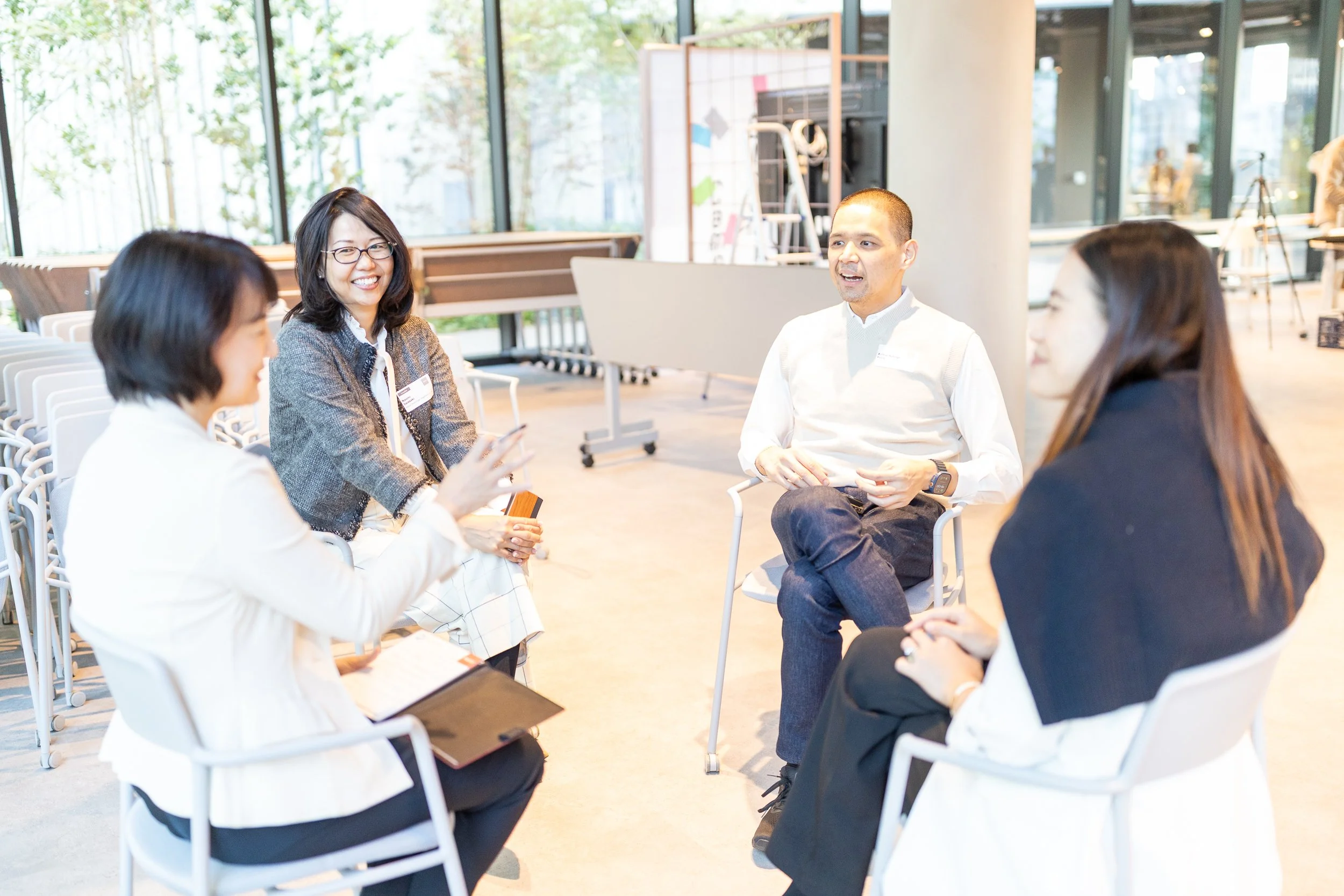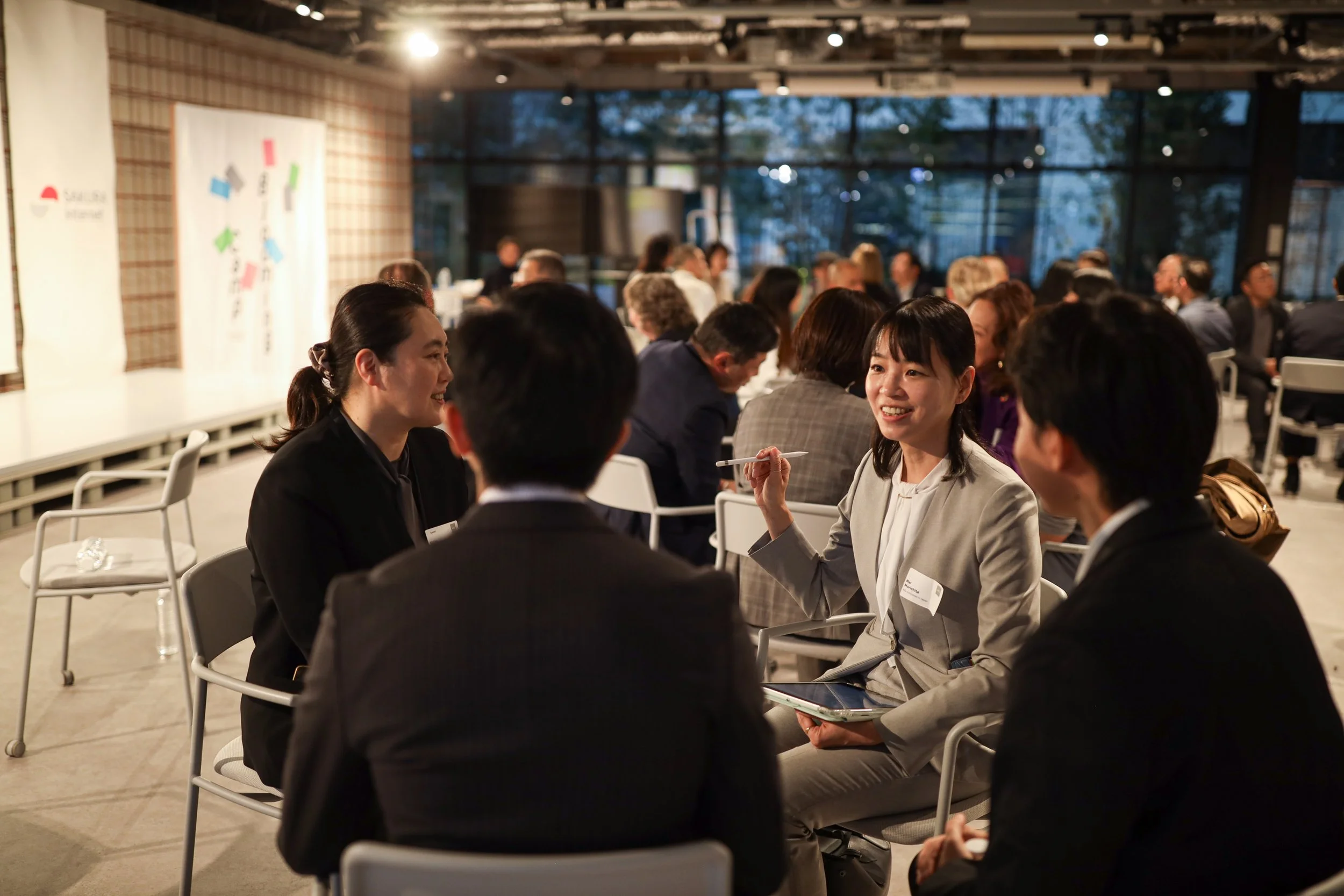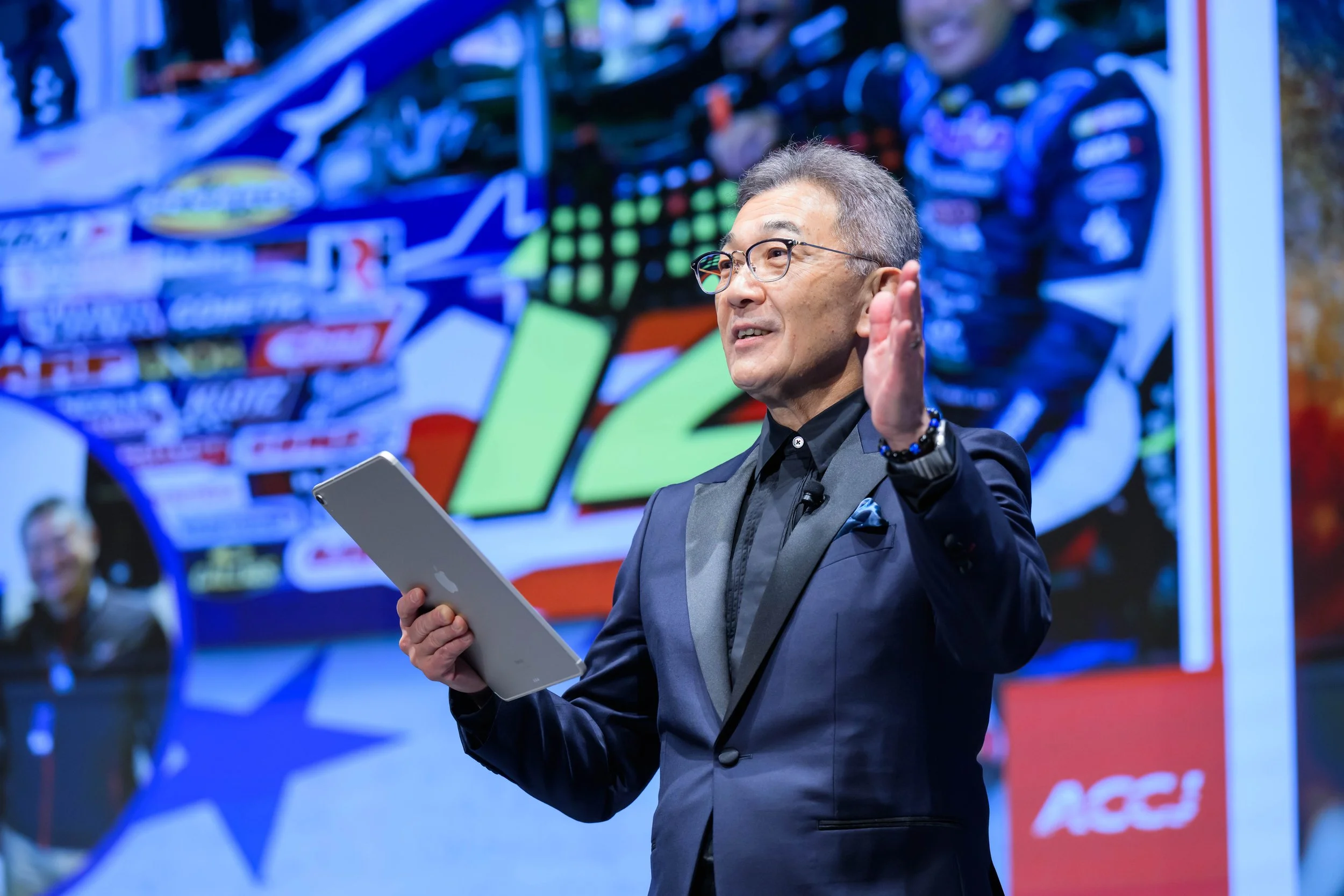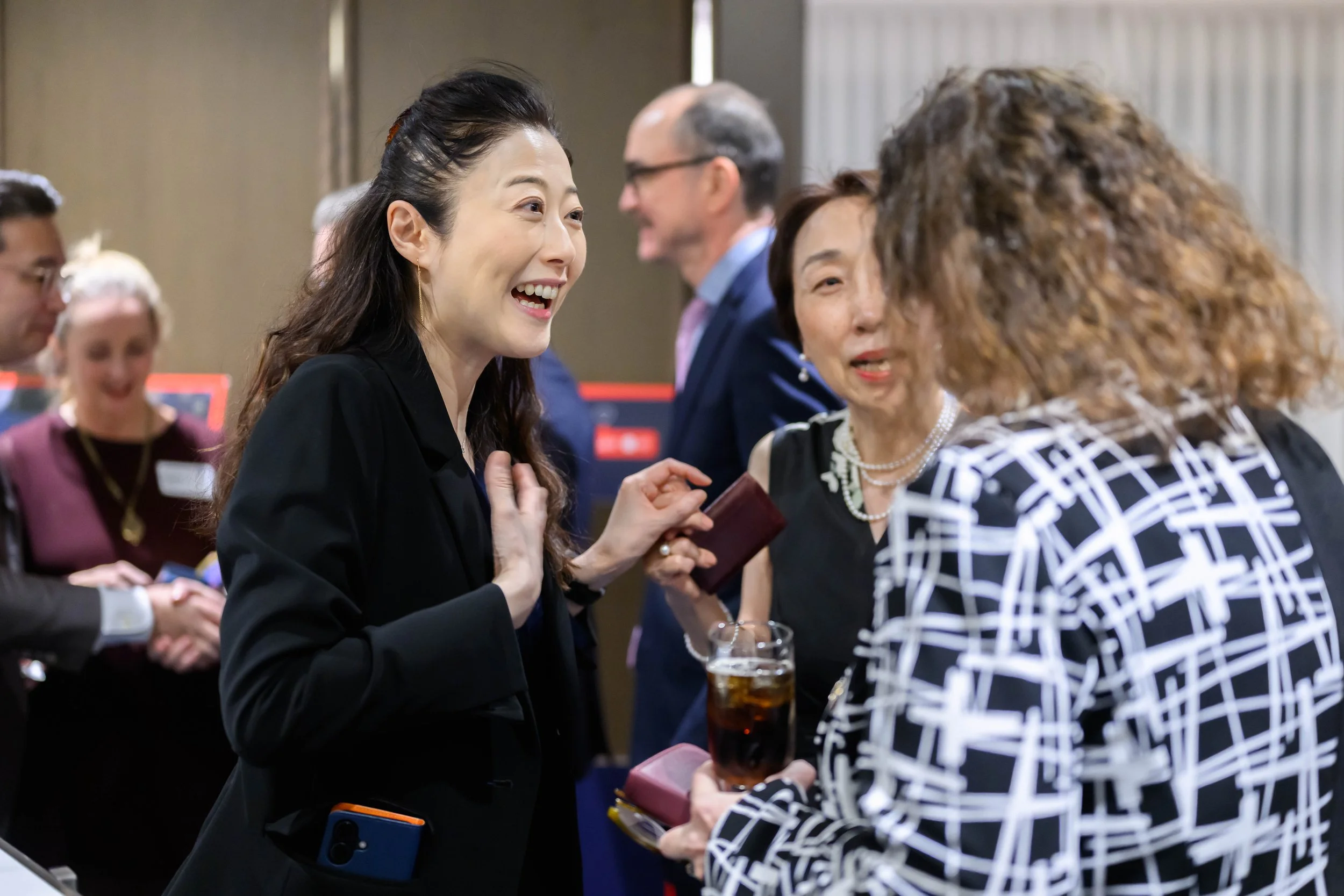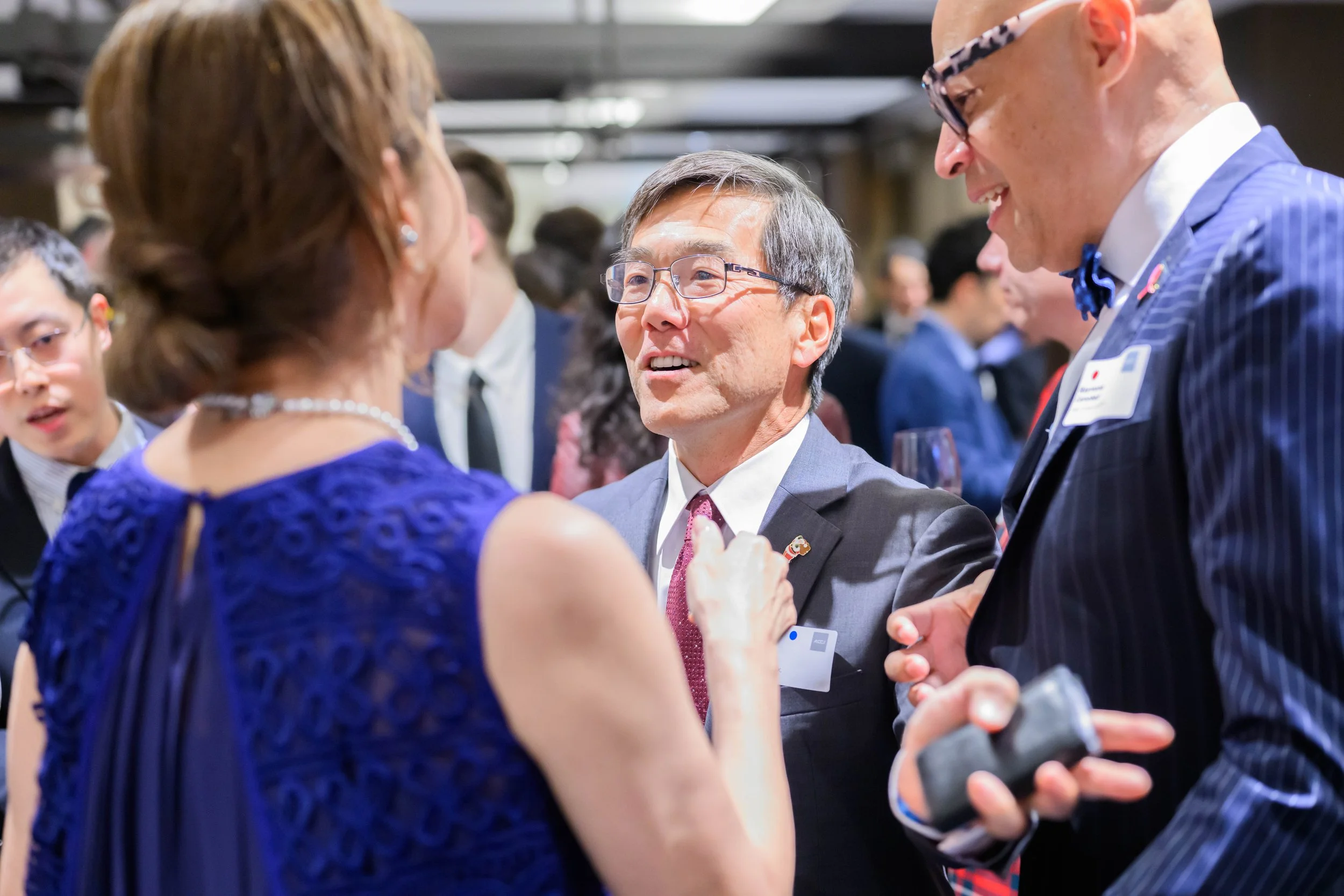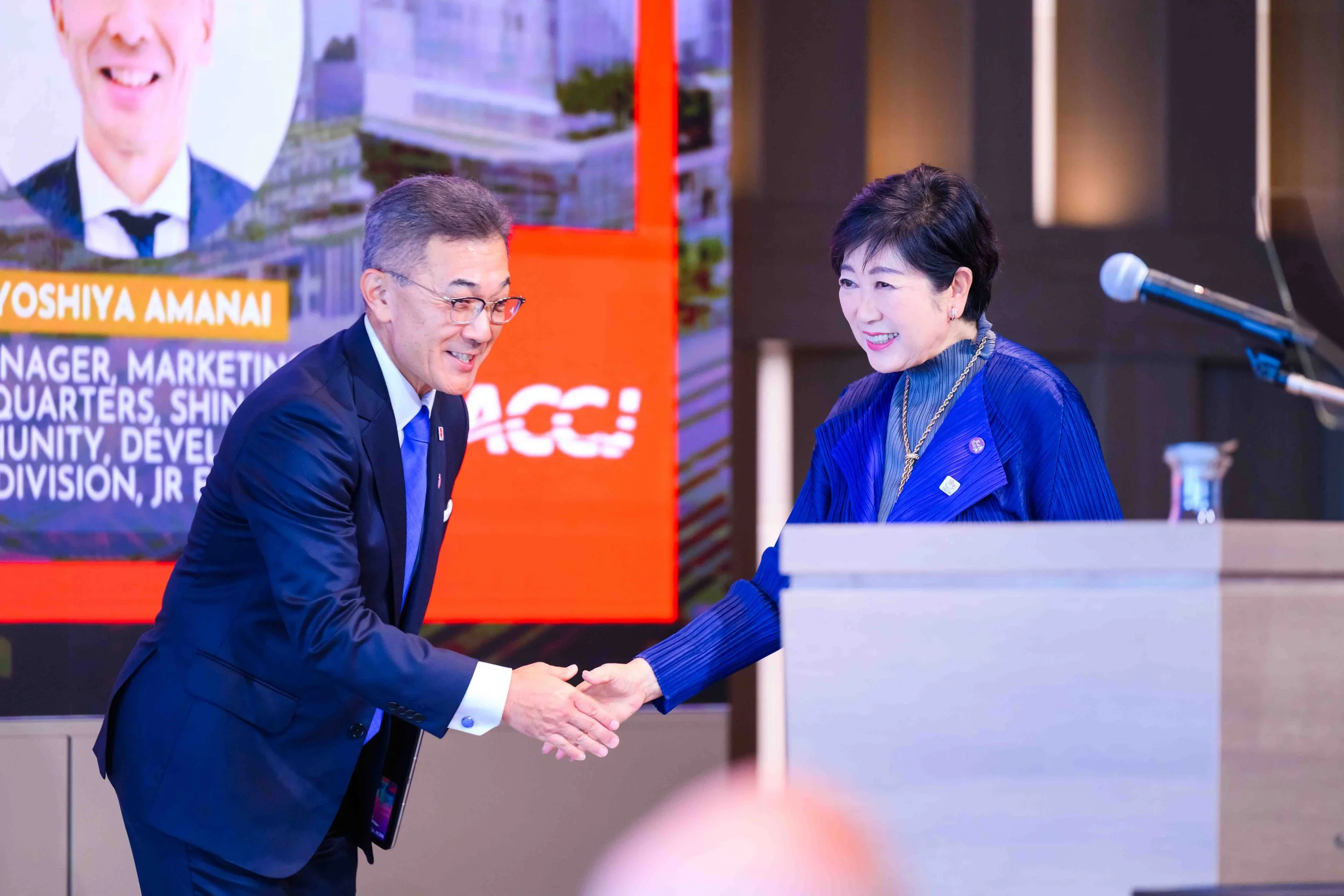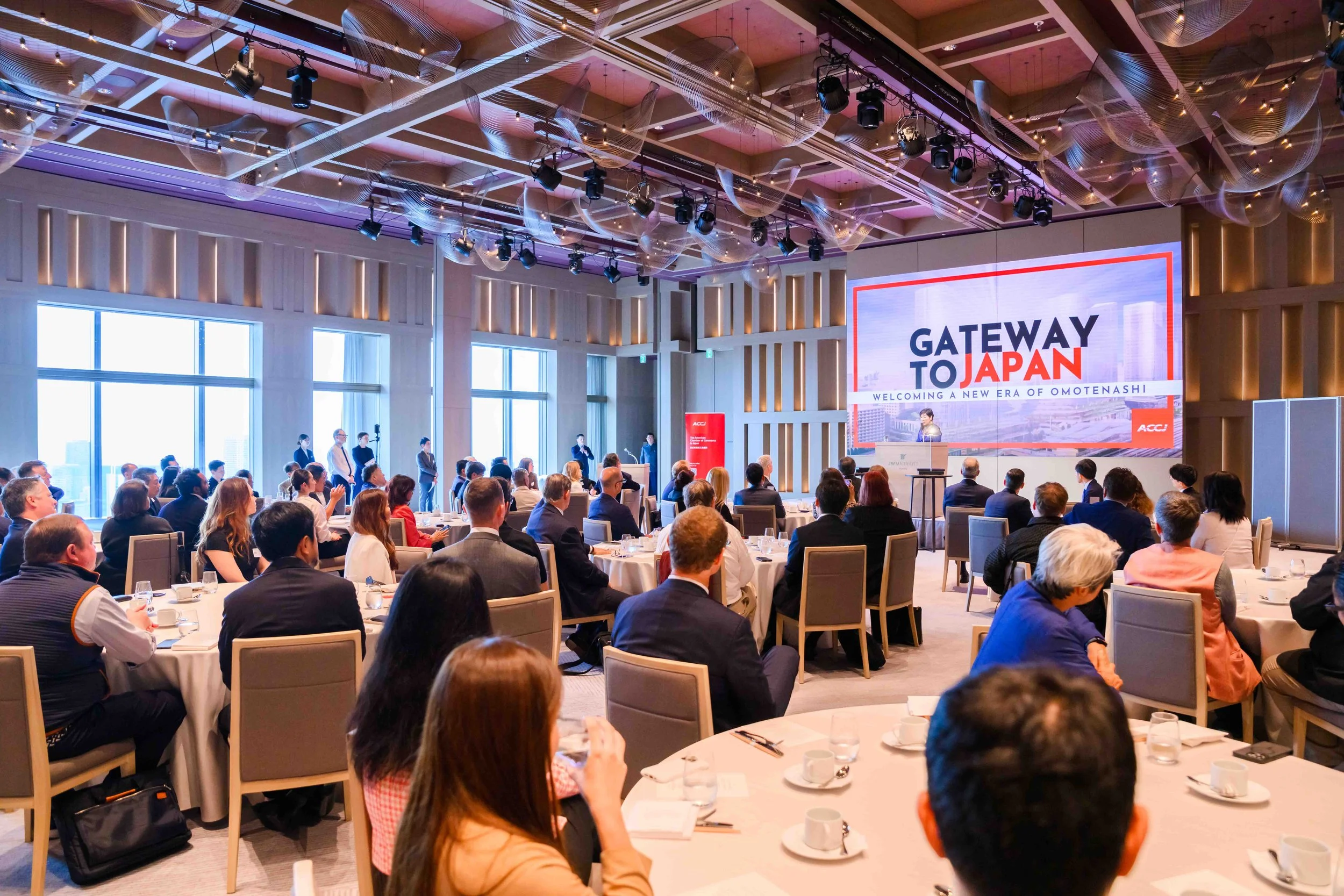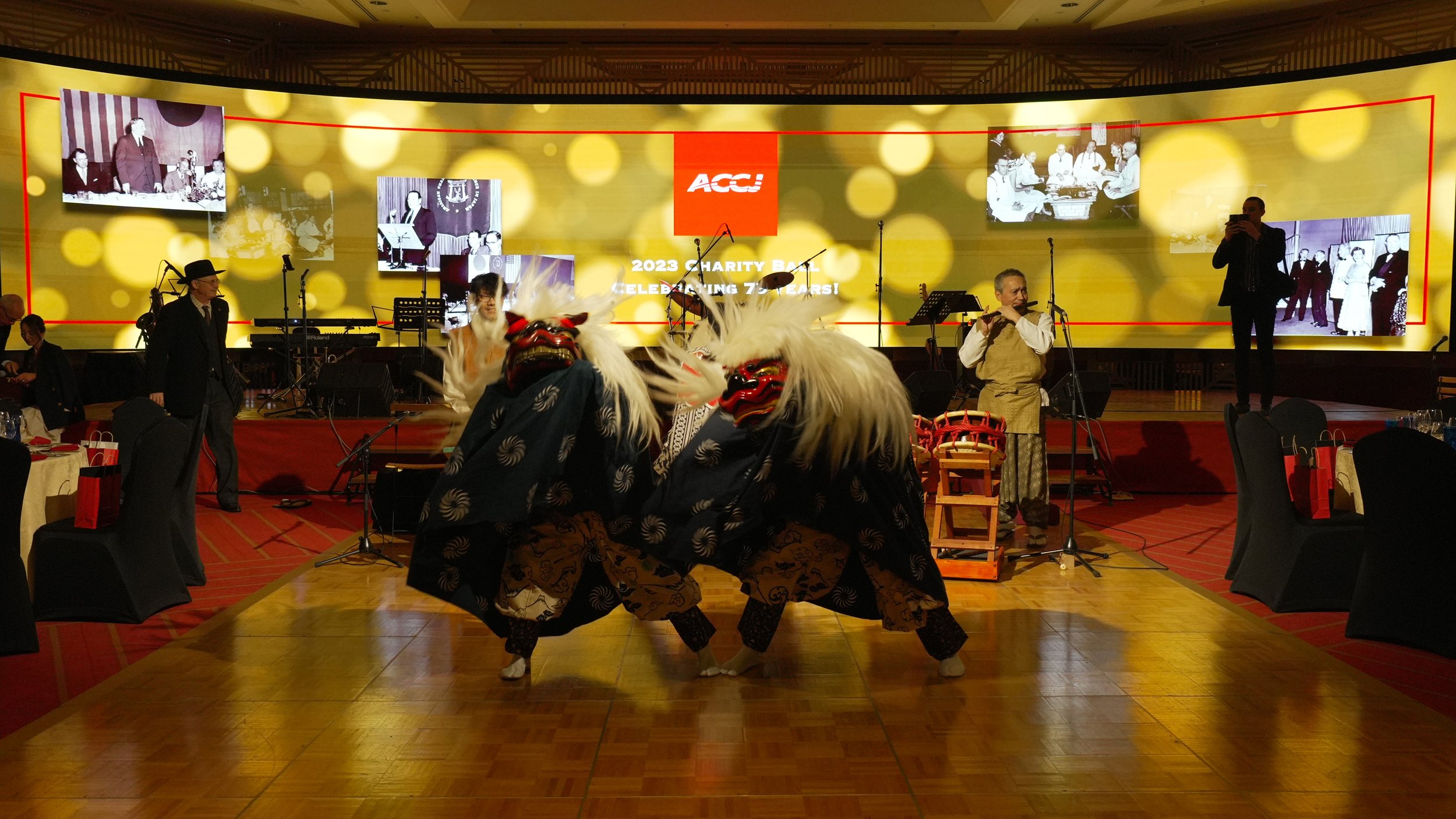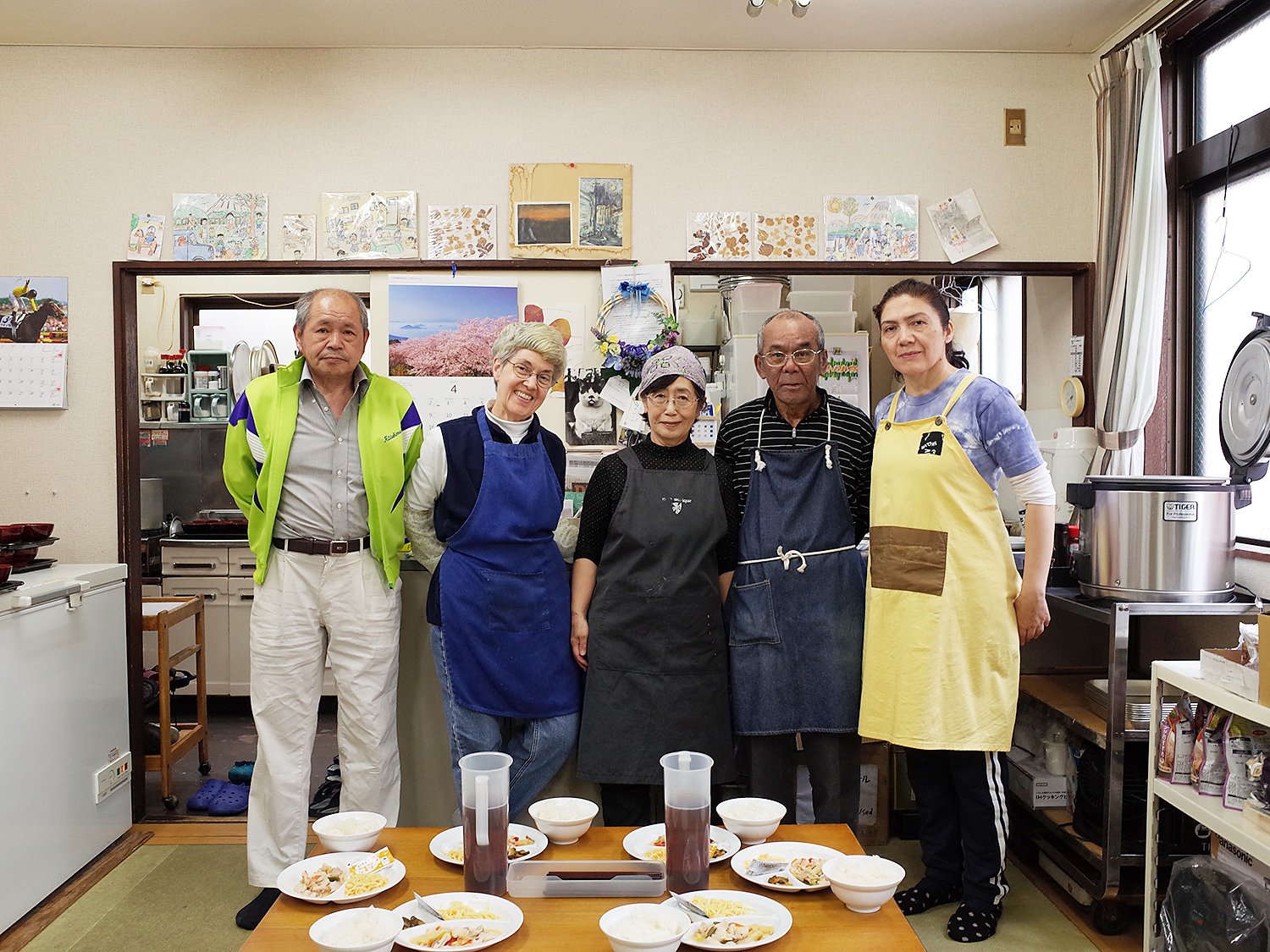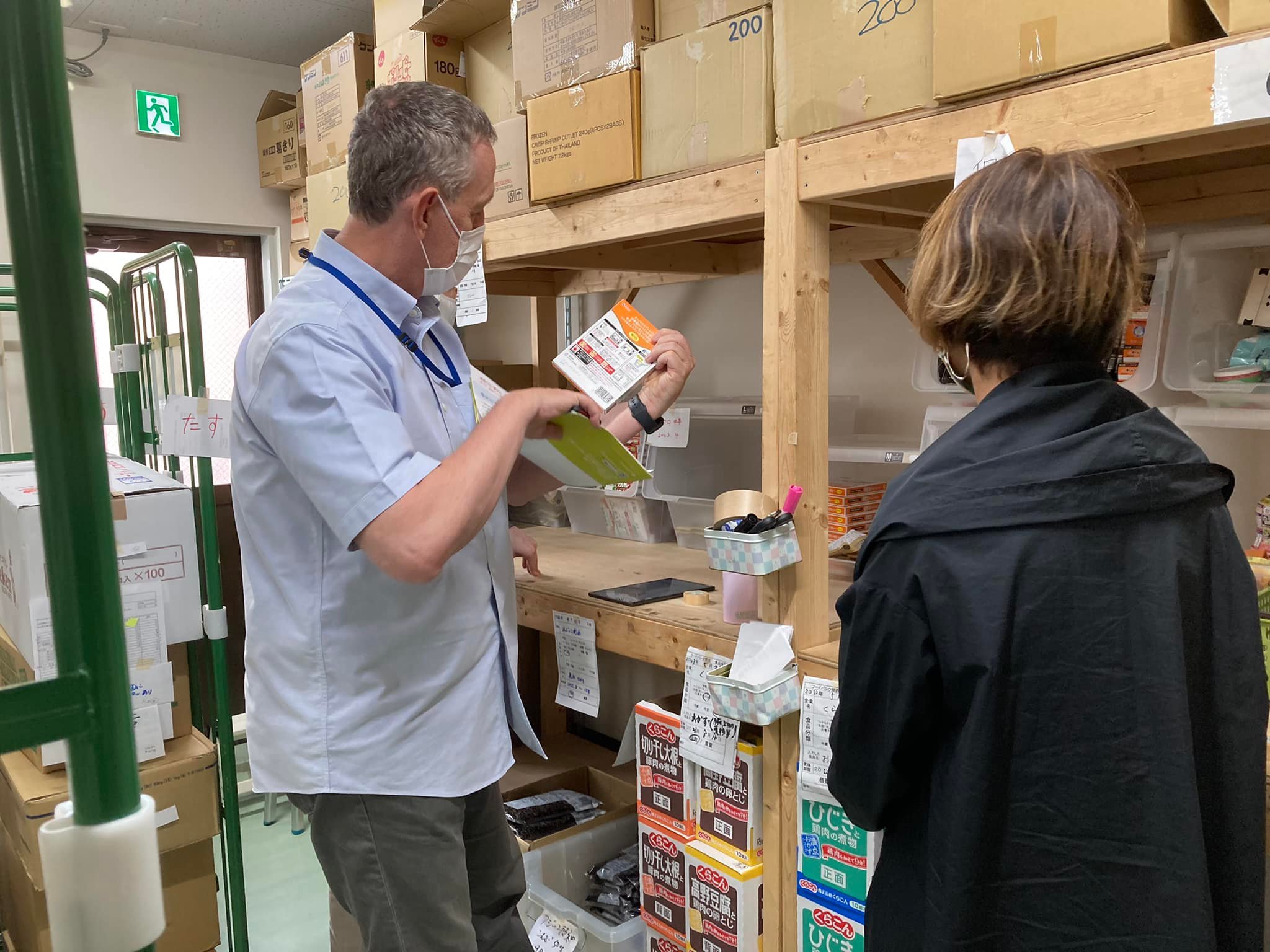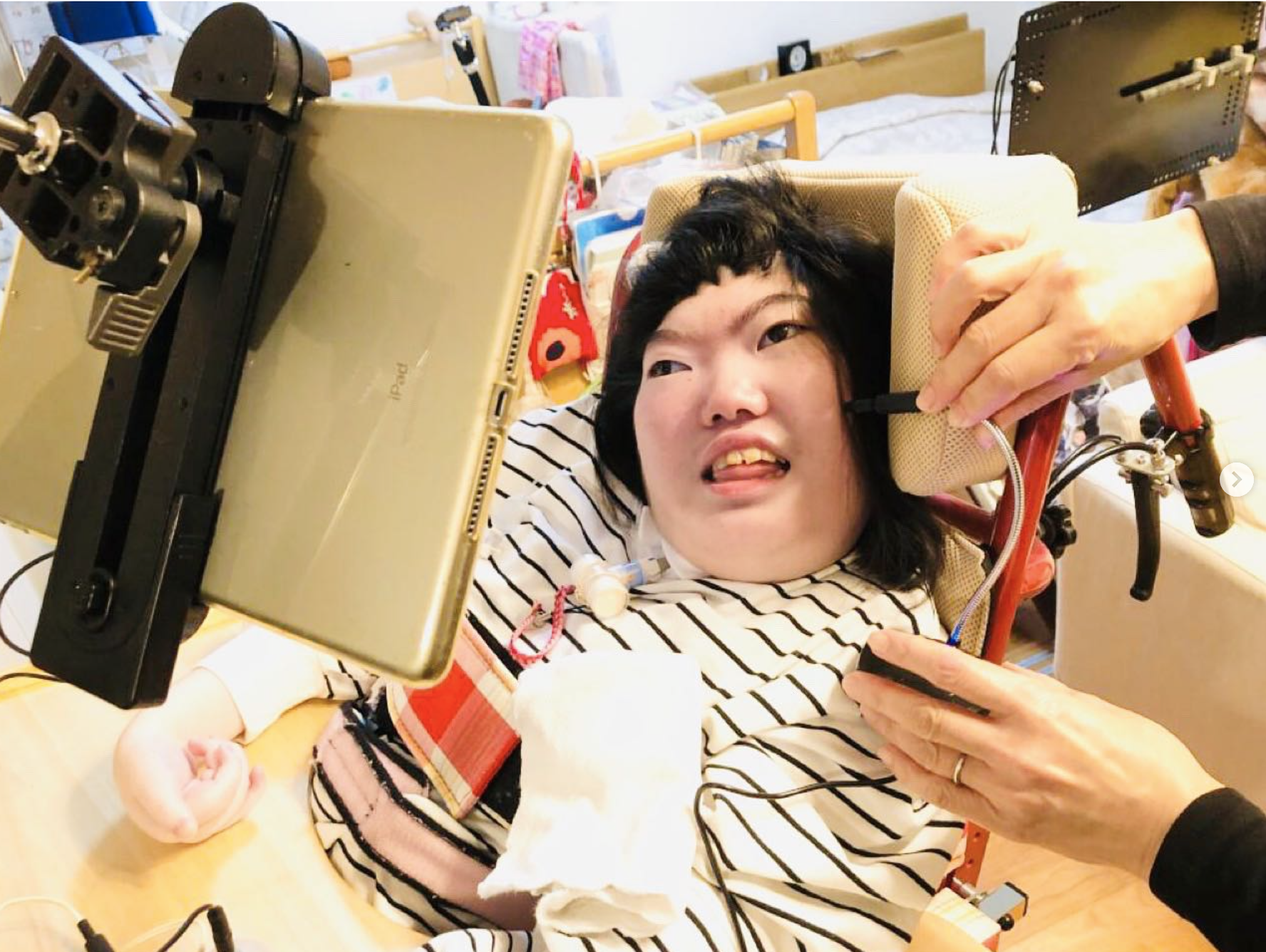2025 Kansai D&I Summit
Diversity and inclusion (D&I) is a noble cause. Over the past decade, many positive changes have been achieved, but there is still a long way to go on the journey to true D&I. But good intentions don’t always guarantee good results. How do we get D&I back on track?
What D&I is missing … and how to get back on track through dialogue.
Photos by Rie Watson • Artwork by Kanna Yoshikawa
Diversity and inclusion (D&I) is a noble cause. For years, companies in Japan have pursued diversity in the workplace with the support of the American Chamber of Commerce in Japan (ACCJ). And over the past decade, many positive changes have been achieved, but there is still a long way to go on the journey to true D&I.
Good intentions don’t always guarantee good results, which may be a factor in the strengthening headwinds pushing back on efforts for greater equality. Without the right approach, the most well-meaning D&I initiatives can stall, misfire, or even harm the movement itself.
So how do we get D&I back on track?
That is the question that was at the heart of this year’s Kansai D&I Summit, held at Blooming Camp inside Grand Green Osaka on November 11. Hosted by the ACCJ–Kansai Diversity & Inclusion and Business Programs Committees, along with the ACCJ Women in Business Forum, the gathering featured a workshop led by James Chappell, a communications trainer who is chief executive officer of BEMi Consulting, Inc., and a “prep session” discussion moderated by ACCJ–Kansai Diversity & Inclusion Committee Co-chair Mie Kitano.
The discussion featured three diverse voices sharing their views on the importance of D&I.
- Arthur Pena, group director for Media at P&G Japan
- Alison Chen, associate director in marketing at Eli Lilly Japan
- Naomi Iwasaki, manager in finance at Nippon Boehringer Ingelheim
Chen and Iwasaki are vice-chairs of the ACCJ–Kansai Diversity & Inclusion Committee.
Kitano explained that the approach to this year’s summit was to share stories from middle managers rather than top executives to shed light on challenges that many of us face in our everyday work, and how those managers are handling situations and creating better working environments.
During the networking that followed, attendees were able to further explore what they had learned from the workshop and prep session, and consider how they could carry these insights back to their companies and begin getting D&I back on track. And the whole evening was captured in the moment by Kanna Yoshikawa through her graphic recordings, shown on the opposite page.
An Evening of Connection and Appreciation
Members of the American Chamber of Commerce in Japan (ACCJ) and their guests gathered in the Hilton Tokyo’s Kiku Ballroom on December 11 to close out 2025 with its final signature event of the year.
The ACCJ closes out 2025 with a festive night of networking and honors.
Photos by Miki Kawaguchi/LIFE.14
Members of the American Chamber of Commerce in Japan (ACCJ) and their guests gathered in the Hilton Tokyo’s Kiku Ballroom on December 11 to close out 2025 with its final signature event of the year.
ACCJ President Victor Osumi took to the stage against a starry backdrop to welcome everyone to An Evening of Connection and Appreciation, a formal cocktail-style reception that brought together nearly 300 ACCJ members and guests.
“As we gather tonight, it is an opportunity to reflect on a year filled with remarkable achievements,” Osumi said. “It is a chance to reflect on a tremendous year of activity at the chamber, thanks to the support of our members’ collective efforts. We want to celebrate this spirit of collaboration and excellence.”
Next, to mark the incredible dedication of chamber members, ACCJ Vice President Arthur Mitchell joined Osumi on stage to present the 2025 ACCJ Leaders and Volunteers of the Year awards.
Also joining the festivities was 2025 ACCJ Person of the Year Ambassador William E. Grayson. He was honored for his leadership in advancing the US–Japan partnership as commissioner general of the USA Pavilion at Expo 2025 Osaka, Kansai.
“To receive this award from all of you brings an incredible amount of joy and happiness,” said Grayson, who shares more about the six-month experience of welcoming visitors to the USA Pavilion.
With formalities concluded, attendees indulged in the Hilton Tokyo’s culinary artistry and smooth jazz while making new connections for 2026.
Gateway to Japan
As arrivals boom, can the country’s hospitality industry keep pace through a new era of omotenashi? That was the question at the center of an ACCJ event hosted on October 8, featuring Tokyo Governor Yuriko Koike.
As arrivals boom, can the country’s hospitality industry keep pace through a new era of omotenashi?
Photos Miki Kawaguchi/LIFE.14
From left: Stephen Zurcher, Christopher Clark, Yoshiya Amanai, and Tadayuki Hara
Bullet trains slicing past a snow-covered Mount Fuji. Real-life anime beneath the neon lights of Akihabara. A fleeting glimpse of geisha in Kyoto’s lantern-lit alleys. For millions of tourists around the world, it’s scenes like these that put Japan at the top of their travel list.
Demand for such experiences has surged since the country reopened its borders in October 2022, after nearly two and a half years of pandemic-imposed isolation. This year alone, more than 35.5 million inbound tourists arrived through October, shattering the previous annual record set in 2019 of 31.88 million with two months to go. Japan is well on its way to hitting the government’s target of 60 million by 2030.
With visitors comes money. Inbound tourism is now Japan’s second-largest export industry after autos, and achieving the 2030 goal would see an injection of ¥15 trillion ($100 billion) into the economy—equal to the nation’s annual defense spending at nearly two percent of gross domestic product.
This potential—and how to harness it—was at the center of an event at the new JW Marriott Tokyo on
October 8, hosted by the American Chamber of Commerce in Japan (ACCJ) Tourism and Hospitality Committee and organized by Vice-chair Mayumi Nakamura Birt, who also served as emcee.
Gateway to Japan
Tokyo Governor Yuriko Koike delivered the keynote, sharing exciting plans that stretch even farther and promise to elevate all aspects of tourism, going beyond sightseeing to business, education, cultural exchange, events, investment, and innovation.
“We have formulated the Tokyo 2050 Strategy as a compass guiding us to the future,” she explained, speaking in a milestone year when New York City and Tokyo celebrate their 65th anniversary as sister cities. “The driving force harnessing the strength of the city is people. And that is why Tokyo is advancing people-focused initiatives. Notably, in response to globalization, we are bolstering efforts to build an environment enabling younger generations to play an active role in the world. Through our investment in people who underpin socioeconomic activities, we will enhance our hospitality and guide the further growth of Tokyo and the rest of Japan.”
Tokyo ranked third behind New York and London in the 2024 Global Power City Index, compiled by the Mori Memorial Foundation’s Institute for Urban Strategies. First published in 2008, the annual study ranks major cities around the world in terms of magnetism—their power to attract creative individuals and enterprises—according to 70 indicators across six functions:
- Economy
- Research and development
- Cultural interaction
- Livability
- Environment
- Accessibility
Thanks to improvements in research and development, cultural interaction, livability, and accessibility, Tokyo significantly increased its score from the previous year, closing the gap on second-place New York. In the study’s actor evaluation—how a city is perceived by specific groups of people—Tokyo ranked second among tourists.
But there’s still room for improvement. After-dark activities is one area highlighted by Koike.
“We are also focusing on upgrading our nighttime tourism. Projection mapping on the wall of the Tokyo Metropolitan Government building holds a Guinness record and has attracted over 900,000 spectators,” said the governor.
The event’s panel of experts, who discussed hospitality in depth following the keynote, also touched on nighttime offerings.
“Compared to other countries, Japan has quite few nighttime activities,” noted Yoshiya Amanai, a manager at East Japan Railway Company (JR East) who oversees the marketing headquarters of the Shinagawa Community Development Division. JR East is the developer of the Takanawa Gateway City complex, of which the JW Marriott is a part.
Amanai said that entertaining guests after 5:00 or 6:00 p.m. is a core part of the Takanawa Gateway concept, and such activities will expand as more buildings open. The complex is scheduled for completion in spring 2026.
“If we can expand the nighttime economy, that’s going to bring a lot of revenue,” he added.
Broader Appeal
Tokyo is at the center of discussion because it truly is the gateway to Japan. Two-thirds of all visitors to the country come through the capital. While 2025 numbers are not yet in, that figure equated to nearly 25 million people in 2024.
But for Japan to truly benefit from its superstar role on the global travel stage, tourist destinations beyond Tokyo and the Golden Route that runs west through Kyoto and Osaka must be developed and marketed.
Stephen Zurcher, chair of the ACCJ Tourism and Hospitality Committee and moderator for the discussion, noted that diversification is essential in part because the most popular destinations are seeing strain on their infrastructure as a result of Japan’s remarkable tourism growth.
JR has been doing its part with a special experience that taps into one of tourists’ greatest loves and fascinations about the country: trains.
“In 2017, we started Shiki-shima, a luxurious train with service spanning three to five days in the eastern side of Japan,” Amanai shared.
Shiki-shima takes travelers to lesser-known corners of Honshu, tracing routes from Tokyo’s Ueno Station north to Tohoku and Hokkaido—the opposite direction from the Golden Route. Its journeys tear up the typical guidebook itinerary to reveal delights such as the cedar forests of Nikko, the sake breweries and crafts of Fukushima and Miyagi, the inns and hot springs of the Iwate highlands, and the samurai history of Akita.
“It’s expensive, but every time we sell tickets they all sell out,” Amanai added. All courses through summer are fully booked, and JR is currently accepting applications for tours between July and September.
JW Marriott Tokyo General Manager Christopher Clark shared Marriott International’s embrace of diversified tourism. “We operate 116 hotels in Japan, and the goal is to continue growing in all prefectures. We see that inbound tourists are increasingly interested in traveling beyond the Golden Route. We want to be there, whenever our customers want to go.” Also an ACCJ governor, Clark was previously general manager and oversaw the opening of JW Marriott Nara before moving to Tokyo to lead the new property in Takanawa Gateway City.
People Matter
The theme of investment in people, which Governor Koike emphasized as central to Tokyo’s future, resonated in the panel discussion.
One thing the panelists agreed on is that more qualified talent is needed to meet the growing needs of Japan’s skyrocketing tourism industry. Clark experienced this firsthand while hiring for JW Marriott Tokyo.
“Our biggest challenge opening the hotel was the human resource element,” he revealed. “I think the number of young associates who are willing to enter the hospitality business is becoming less and less in Japan. We need to continue to encourage the younger generation to join our industry. However, we also need support from the international market, in regards to visas and programs, to allow these employees to come and be trained on language but also Japanese omotenashi.”
Dr. Tadayuki Hara is very familiar with the industry talent outside Japan. He is an associate professor and senior research fellow at the Dick Pope Sr. Institute for Tourism Studies at the University of Central Florida in Orlando, a tourism mecca.
Hara noted the importance of developing human resources. “Unfortunately, in Japan, many universities are putting emphasis on tourism studies, but it’s a study of tourism. I don’t think it’s really meeting the need of the industry. Whereas in America, 70–75 percent of tourism-related programs are hospitality management. Management is how you allocate the limited internal resources into the highest growing areas.”
He sees three skills as key:
- Hospitality management
- Entertainment management
- Event management
Zurcher, dean of Asian studies at Kansai Gaidai University in Osaka, has been working to boost Japan’s hospitality talent for years. “Honestly, the reason I started a hospitality program 10 years ago was to help Chris [Clark] and other GMs who were telling me that they couldn’t find enough people to support the growth of their business. And now, of course, that challenge has become more severe.”
The gap—and the challenge of filling it—is certainly not lost on policymakers. Koike used part of her keynote to announce that Tokyo will subsidize overseas study for young people, noting that the weak yen has reduced their ability to gain international experience. “We wish for more of our young people to step out into the world,” she said. “Through our investment in people who underpin socioeconomic activities, we will enhance our hospitality and guide the further growth of Tokyo and the rest of Japan.”
Education, however, is not only about developing talent. It’s also about helping locals understand why tourism matters, Hara said. “What the government needs is more marketing. Not external marketing to bring more people, but internal marketing. Tell taxpayers and residents about the importance of tourism. In America, this is highly emphasized. For a destination marketing organization, a DMO, it’s usually one of the three pillars. Whereas in Japan, many DMOs are not really paying attention to the internal market.”
Japan now faces a simple but powerful challenge: to grow tourism not only by promoting the country abroad, but by building understanding at home. And if it succeeds, 60 million tourists will be more than a visitor metric; it will be a driver of local prosperity.
Welcoming a New Era of Omotenashi
Tokyo Governor Yuriko Koike headlines a special ACCJ event on the future of tourism.
Tokyo Governor Yuriko Koike headlines a special ACCJ event on the future of tourism.
Photos Miki Kawaguchi/LIFE.14
From left: ACCJ Tourism and Hospitality Committee Vice-chair Mayumi Birt, Executive Director Laura Younger, Tokyo Governor Yuriko Koike, ACCJ President Victor Osumi, and Tourism and Hospitality Committee Chair Stephen Zurcher
On October 8, more than 120 attendees joined the American Chamber of Commerce in Japan (ACCJ) at the new JW Marriott Tokyo, part of the East Japan Railway Company’s Takanawa Gateway City development, for a discussion about ways to reimagine Japan’s inbound tourism.
Hosted by the ACCJ Tourism and Hospitality Committee, the event kicked off with a keynote by Tokyo Governor Yuriko Koike, who highlighted how the city is leading the way as a global tourism destination under its Tokyo 2050 Strategy.
Following Koike’s extensive presentation, committee Chair Stephen Zurcher moderated a thought-provoking discussion on the future of tourism in Japan with three tourism and hospitality leaders:
Dr. Tadayuki Hara associate professor and senior research fellow at the University of Central Florida’s Dick Pope Sr. Institute for Tourism Studies
Yoshiya Amanai, manager of the marketing headquarters for the East Japan Railway Company’s Shinagawa Community Development Division
Christopher Clark, general manager of JW Marriott Tokyo
With Japan welcoming 28.38 million visitors for the year through August, and a target of 60 million annual visitors by 2030, this event came at a critical point for the country’s hospitality and tourism industry.
Key themes discussed include:
Melding traditional omotenashi hospitality with data-driven, connected-city strategies.
Cross-sector collaboration among hospitality, rail, and urban planning.
Leveraging Japan’s existing rail network to expand tourism beyond the Tokyo–Kyoto–Osaka “Golden Route.”
A focus on high-value, experience-driven tourism and repeat visitors.
Practical ways to fill critical staffing gaps and cultivate multilingual, digitally fluent teams.
The ACCJ extends a sincere thank-you to Governor Koike, our distinguished panelists, and all the attendees, as well as JW Marriott Tokyo for its support of this event.
Osaka to Orbit
Japan’s space sector charts a bold course at Expo 2025.
Japan’s space sector charts a bold course at Expo 2025.
Photos Andy Boone
On August 19, 2025, the Kansai chapter of the American Chamber of Commerce in Japan (ACCJ) hosted a landmark panel discussion at Expo 2025 Osaka, Kansai. Members, guests, and the general public gathered inside the USA Pavilion for “Osaka to Orbit,” an event at which four distinguished leaders from Japan’s space industry explored the nation’s expanding role in low earth orbit commercialization, orbital sustainability, and aerospace innovation in a panel discussion moderated by Toshio Ono of Boeing Research & Technology Japan.
Voices from the Final Frontier
The discussion opened with remarks from Dr. Koichi Wakata, chief technology officer at Axiom Space and Japan’s most experienced astronaut. Wakata, who has spent more than 500 days in space and served as the first Japanese commander of the International Space Station (ISS) reflected on his early fascination with space, sparked by a 1973 Gakken children’s encyclopedia, and traced Japan’s evolution from a peripheral player in space exploration to a central contributor to the future of orbital infrastructure. He introduced Axiom’s ambitious plan to construct the world’s first commercial space station, which will succeed the aging ISS. The Axiom Station is designed to support microgravity research, in-space manufacturing, and orbital data centers, offering a platform for both scientific advancement and commercial enterprise. Wakata emphasized that Japan’s technical expertise and international partnerships position it to play a pivotal role in shaping the next chapter of human spaceflight.
Nobu Okada, founder and chief executive officer of Astroscale Holdings, addressed the increasingly urgent issue of space debris. “As there was no existing market, I took on the challenge,” he explained. Examples of about 1,600 new pieces of debris created by major rocket and satellite fragmentations in the second half of 2024 alone were shown. While Astroscale focuses on large debris, NASA estimates more than 100 million objects of one millimeter or smaller exist. In some cases, they can collide with other objects at over 100 times the speed of a bullet. Okada presented Astroscale’s suite of on-orbit servicing technologies, including debris removal, satellite life extension, and inspection capabilities. Okada framed space sustainability not only as a technical challenge but also as a moral and generational imperative. He called on younger innovators to view orbital cleanup as both a societal responsibility and a viable business model, stressing that the long-term viability of space commerce depends on maintaining a safe and navigable orbital environment.
Koichi Yonemoto, cofounder and chief technology officer of Space Walker Inc., introduced Japan’s first reusable suborbital spaceplane initiative. With a similar silhouette to the US space shuttle, more reusable parts would save time and costs. With technical leadership drawn from the Kyushu Institute of Technology and the Tokyo University of Science, Space Walker aims to democratize access to space through tourism, scientific payload delivery, and small satellite launches. Yonemoto outlined a phased development timeline leading to orbital missions and even space tourism over the next 10 to 20 years, supported by strategic partnerships with Kawasaki Heavy Industries, Toray Industries, and the Japan Aerospace Exploration Agency, better known as JAXA. He emphasized that the company’s regional manufacturing base in Fukushima and its planned launch operations in Hokkaido position Space Walker as a catalyst for regional revitalization and industrial diversification.
Osamu Aoki, president and chief executive officer of Aoki Co., Ltd., provided a grounded perspective from Japan’s small and medium-sized enterprise (SME) sector. Aoki’s company, based in Higashi-Osaka, supplies precision components for Astroscale’s servicing satellites and Space Walker’s vehicles. As the smallest Boeing-certified factory in the world, Aoki proudly underscored the value of craftsmanship, proposal-driven engineering, and workforce development. He described his company’s approach to manufacturing as deeply rooted in monozukuri—the Japanese philosophy of making things with spirit and precision. Aoki challenged the audience to recognize the strategic importance of Japan’s SME ecosystem in sustaining a competitive and resilient space economy.
The panel concluded with a lively Q&A session, during which audience members engaged with the speakers on topics ranging from launch site strategy and international collaboration to the role of public–private partnerships in accelerating innovation. The discussion revealed a shared optimism about Japan’s trajectory in space and a collective commitment to ensuring that its contributions are both technologically advanced and socially responsible.
Future Visions
The sold-out Osaka to Orbit event offered a vivid glimpse into Japan’s vision for space—a domain with no boundaries or limits—thanks to the efforts of the ACCJ–Kansai Business Programs, the ACCJ–Chubu Aerospace and Mobility, and the ACCJ Aerospace and Defense Committees, as well as the support of the US Consulate General Osaka–Kobe. From astronauts and entrepreneurs to engineers and machinists, the panelists embodied a unified vision: that space is no longer a distant aspiration but a tangible frontier—one that begins in Osaka and extends far beyond. The ACCJ also thanks Electroimpact, Takata International, MGM Resorts, and Jupiter International Corporation for their generous support, enabling the chamber to take part in Expo 2025’s showcase of global innovation and affirming that Japan’s space sector is not only ready to participate in the next era of exploration but to help lead it.
Welcome to Japan Ambassador Glass
The ACCJ joined the America-Society Japan in greeting Washington’s new representative on June 6.
The ACCJ joined the America-Japan Society in greeting Washington’s new representative on June 6.
From left: Ambassador George Glass, America-Japan Society President Ambassador Ichiro Fujisaki, and ACCJ Chairman Ambassador Christopher LaFleur
The American Chamber of Commerce in Japan (ACCJ) was honored to welcome US Ambassador to Japan George Glass and his wife Mary Glass to a luncheon on June 6 at the Okura Tokyo. The event, co-hosted by the America-Japan Society, drew more than 450 leaders from the international business community and highlighted the strength of US–Japan economic ties.
Ambassador Glass reaffirmed his commitment to a strong and enduring bilateral alliance built on shared values. He also emphasized the importance of people-to-people connections, which are at the heart of the ACCJ. “Our people are the glue that binds this alliance and gives it strength and substance,” he said.
The chamber extends thanks to Ambassador and Mrs. Glass as well as the America-Japan Society and the US Embassy, Tokyo for their partnership and support.
Full recap coming soon.
Chubu Walkathon 2025
The ACCJ Chubu chapter hosted the 34th annual Walkathon on May 18 in Nagoya’s Meijo Park to support local charities and improve the lives of the less fortunate.
ACCJ members and guests gather in Nagoya’s Meijo Park to benefit local charities.
The American Chamber of Commerce in Japan (ACCJ) Chubu chapter hosted the 34th annual Walkathon on May 18 in Nagoya’s Meijo Park.
Held each year in collaboration with Nagoya International School, the mission of the Chubu Walkathon is to support local charities and improve the lives of the less fortunate by creating an opportunity to increase awareness, recruit volunteers, and raise funds at a family-friendly, international outdoor event.
“Your contributions help transform and support the lives of many individuals through the charitable organizations we assist, including individuals living with illness or disabilities, mothers and children affected by domestic violence, and children in need of educational support,” said Nao Geisler, chair of the 34th Chubu Walkathon Planning Committee and the ACCJ–Chubu Community Service Committee (pictured below, top center).
“This year’s event was a tremendous success, offering a meaningful opportunity for many attendees to create memories with their families and friends. We deeply appreciate your continued support and look forward to welcoming you again at next year’s 35th Anniversary Walkathon.”
Rising Star in Global Leadership
Ashiya City Mayor Ryosuke Takashima shared his vision for the future and his commitment to open dialogue with citizens at an event hosted by the ACCJ Kansai chapter on March 27.
Ryosuke Takashima inspires Kansai professionals with tales of his journey from nonprofit work to mayor of Ashiya City.
On March 27, on the cusp of sakura season, the Kansai chapter of the American Chamber of Commerce in Japan (ACCJ) welcomed Ashiya City Mayor Ryosuke Takashima for an evening event titled Rising Star in Global Leadership. The gathering, which drew a diverse crowd of professionals, exemplified the chapter’s commitment to showcasing dynamic leaders who are shaping the future of business and politics in Japan.
The event was the culmination of efforts that began in September 2024, when the ACCJ first reached out to the mayor. This was followed by the Kansai Young Professionals Committee delivering a letter directly to his office inviting him to the chamber’s first-ever Christmas charity event, where we were able to discuss potential collaborations in the future.
Takashima, who at 26 became the youngest person elected mayor in Japanese history, shared insights into his journey from the nonprofit sector to city governance.
Attendees, ranging from young professionals to seasoned executives, eagerly absorbed Takashima’s hands-on approaches to civic leadership. His presentation, which focused on his vision for Ashiya City’s future and his commitment to open dialogue with citizens, energized the audience and sparked thoughtful discussions throughout the evening.
Communication and Dialogue
Interestingly, Takashima’s youth, far from being a hindrance, emerged as a strength that has allowed him to be more relatable to a wider demographic. This is particularly noteworthy given Ashiya’s generally older population. Recent demographic reports indicate that about 32 percent of the city’s residents are over 65.
Takashima explained how he leverages his position to bridge generational gaps, bringing fresh ideas while also respecting the city’s rich history. Illustrating his commitment to inclusive governance, the mayor recounted how his town hall meetings have attracted participants of all ages—the youngest attendee having been just eight. The mayor emphasized how these diverse interactions have shaped his policies and communication strategy, ensuring that he hears from as many voices as possible.
During the discussion, Takashima reflected on his journey, describing his education and his work in the nonprofit sector as preludes to his political career. In particular, he emphasized the profound impact of his volunteer work in the aftermath of the Great East Japan Earthquake and Tsunami of March 11, 2011. He credits the experience with shaping his understanding of crisis management and community resilience.
Takashima stressed that while these experiences were valuable, his current role as mayor allows him to implement significant changes with the widest outreach. He underscored that communication and dialogue form the core tenets of his policymaking, enabling him to understand and address the diverse needs of Ashiya’s citizens more effectively. He provided concrete examples of how this approach has led to successful initiatives in the city, from educational reforms to community engagement programs.
The event took an unexpectedly personal turn when Takashima, responding to a question about work–life balance, mentioned his love for the Hanshin Tigers, the Nippon Professional Baseball League team based in Nishinomiya, the city neighboring Ashiya in Hyogo Prefecture. This moment of levity added a relatable dimension to the mayor’s persona and provided a brief, enjoyable diversion from the more serious topics of the evening.
True to his commitment to open dialogue, Takashima agreed to conduct an unscripted Q&A session in addition to the fireside chat’s prepared questions. His willingness to engage in spontaneous discussion made the event truly interactive.
To accommodate the diverse linguistic needs of participants, many of whom were not fluent in English, the AI translation app Wordly—previously proved effective at HxD and D&I events—provided simultaneous interpretation throughout the evening.
Nurturing Connections
The event reinforced the Kansai chapter’s role as a vital platform for meaningful discussions on leadership and civic engagement while nurturing connections among professionals invested in Japan’s evolving business and political landscape. By bringing together diverse perspectives and fostering open dialogue, the chapter continues to play a crucial role in shaping the future of business and governance in the Kansai region and beyond.
As the event concluded, many attendees expressed a desire to learn even more about Takashima and to continue networking with fellow participants. This enthusiasm for further engagement and knowledge-sharing was an incredibly gratifying response for the event committee, underscoring the success of the evening and the appetite for similar future gatherings.
The Kansai chapter expresses its heartfelt gratitude to Takashima, the Ashiya City Office, and everyone who contributed to the success of this impactful event. The invaluable support provided by the Kansai Membership Relations and Kansai Business Programs Committees ensured the event’s smooth execution and broad appeal. A note of appreciation is also extended to WeWork Japan for providing the venue at WeWork Midosuji Frontier, a modern and flexible space that significantly contributed to the success of the event.
Capitol Discourse
On April 23 and 24, ACCJ President Victor Osumi, Chairman Christopher LaFleur, and Executive Director Laura Younger visited the US capital to meet with members of the administration.
ACCJ leaders visit Washington to better understand the road ahead.
From left: ACCJ External Affairs Manager for US Government Affairs Joey Vetter, Executive Director Laura Younger, President Victor Osumi, Japanese Ambassador to the United States Shigeo Yamada, and ACCJ Chairman Christopher LaFleur
Dialogue is the cornerstone of effective advocacy, and staying in touch with what is happening in Washington is essential for the American Chamber of Commerce in Japan (ACCJ) to effectively support its members and the wider business community.
On April 23 and 24, ACCJ President Victor Osumi, Chairman Christopher LaFleur, and Executive Director Laura Younger visited the US capital to meet with members of the administration.
The delegation also met with Japanese Ambassador to the United States Shigeo Yamada and officials from the Embassy of Japan and visited external organizations, including:
- The Department of Commerce
- The Office of the US Trade Representative
- The Department of the Treasury
- The National Security Council
- The Heritage Foundation
- The American Enterprise Institute
- The America First Policy Institute
- The US Chamber of Commerce
- McLarty Associates
A range of issues were discussed, including the US administration’s core priorities in trade negotiations with Japan and the ACCJ’s recent feedback to the U.S. Trade Representative suggesting that a reduction of non-tariff trade barriers would be an effective way to promote sustainable growth.
“We met with several key stakeholders on the ground in Washington who are encouraged by the continued strong investment in both our nations, across numerous industries,” said Osumi. “Japan is a vital US partner in the Indo–Pacific region, offering significant opportunities for US businesses. This enduring alliance drives productive economic dialogue between our two countries. The ACCJ will continue to advocate for policies that advance the most important bilateral partnership in the world amid a period of rapid change.”
The ACCJ delegation with Senior Advisor for Global Markets at the US Department of Commerce Kevin Manning and Acting Assistant Secretary of Commerce for Global Markets and Executive Director of SelectUSA Ashok Pinto (second and third from left)
Networking for Tomorrow
The ACCJ closed out 2024 with its final signature event of the year, an exciting night of networking and honors in the Hilton Tokyo's Kiku Ballroom.
The ACCJ closes out 2024 with an evening of honors and connections
The Kiku Ballroom at the Hilton Tokyo in Shinjuku erupted on December 5 with vivid lights, pulsing sounds, and the chatter of future business deals being made as the American Chamber of Commerce in Japan (ACCJ) closed out 2024 with its final signature event of the year.
ACCJ President Victor Osumi took to the stage to the beats of the Top Gun theme as he welcomed everyone to Bridging to the Future: Networking for Tomorrow, a cocktail-style reception that brought together more than 260 ACCJ members and guests.
“This event is a moment to recognize our achievements, strengthen our network, and express gratitude to all of you here—and also those not here tonight—who made 2024 a success,” said Osumi.
Next, to mark the incredible achievements of chamber members, ACCJ Vice President Sarah Bader, Vice President–Kansai Jiro Kawakami, and Vice President–Chubu Robert Roche joined Osumi on stage to present the 2024 ACCJ Leaders and Volunteers of the Year awards (more on page 13).
“It has been a tremendous year full of accomplishments and connections,” said Osumi as he closed out the presentation segment of the evening. “As we look to the future, let’s continue to forge partnerships and bring progress and grace to a future of excellence.”
With formalities concluded, attendees indulged in the Hilton Tokyo’s culinary artistry while enjoying the beats of DJ Milky B and forming new connections in Japan’s vibrant business community.
United to Inspire Inclusion
On its 10th anniversary, the Kansai D&I Summit emphasized the importance of unity and collaboration in driving meaningful change.
The ACCJ Kansai Chapter marks a decade of driving business through diversity
The American Chamber of Commerce in Japan (ACCJ) Kansai Chapter celebrated a milestone in its advocacy efforts on November 21 at the 10th anniversary Diversity and Inclusion (D&I) Summit, which took place at Oriental Hotel Kobe.
Host Mie Kitano, co-chair of the Kansai Diversity and Inclusion Committee, welcomed the 130 in-person and 30 virtual guests. She shared how, over the past decade, many positive changes have been achieved, but stressed that there still a long way to go on the journey to true D&I.
“This year’s theme, United to Inspire Inclusion, emphasizes the importance of unity and collaboration in driving meaningful change,” she said. Highlighting the critical role of inclusion in creating an prosperous future for all, she encouraged all participants to actively engage in conversations aimed at realizing equality.
Jason R. Cubas from the US Consulate General Osaka-Kobe then delivered opening remarks.
“I’m pleased to join you for the 10th anniversary of this D&I summit under this year’s theme, United to Inspire Inclusion,” said the consul general. “This theme speaks to something essential. D&I must be woven into the fabric of our organizations and industries as core components of the larger strategies and operations.”
Noting that one of the four key pillars in the US national travel and tourism strategy is to ensure that tourism experiences are diverse, inclusive, and accessible, Cubas cited D&I as a guiding principle that can elevate entire industries by shaping how we engage the world.
“An inclusive approach allows us to understand our colleagues, clients, and communities more deeply, and to unlock new markets and innovate in ways that would otherwise remain out of reach.”
“In Kansai, we saw an inspiring example of this principle in action [in October], when Osaka hosted the International LGBTQ+ Travel Association for their global conference,” he shared. “It was the first time this was held in Asia, and it wasn’t just a milestone for tourism; it was a testament to how an industry’s inclusive practices can drive growth, innovation, and new opportunities.
“Across all sectors, organizations have the opportunity to integrate D&I into their strategic vision. Whether it’s the tourism industry committing to new ways to welcome people of all backgrounds or technology companies designing products accessible to everyone, D&I can and should be foundational to every facet of how we operate,” he continued. “An inclusive approach allows us to understand our colleagues, clients, and communities more deeply, and to unlock new markets and innovate in ways that would otherwise remain out of reach.”
Panel Discussion
Following Cubas’s remarks, Eli Lilly Japan K.K. President and Representative Director Simone Thomsen moderated a panel with three leaders from different industries:
- Irina Menshikova, president of Amway Japan G.K.
- Mari Nogami, president and representative director of Haleon Japan K.K.
- Victor Osumi, managing director and president-Japan of Delta Air Lines, Inc.
Thomsen, who is also the ACCJ Kansai governor, kicked off the discussion by asking each panelist to recount one success story from their company that has inspired inclusion and driven business.
Nogami, who was the first chair of the Kansai Women in Business Committee—now known as the Diversity & Inclusion Committee—shared how Haleon approaches diversity as a new company. The consumer health brand was spun off from GSK in 2022.
“As an independent company newly listed on the New York and London exchanges, having gender diversity is almost mandatory,” she explained. “The company already had made an external commitment that at least 50 percent of the board, executive leadership team, and the business unit leadership would be female. The board is already 40 percent female and the executive team is 47 percent female. That is a serious commitment. We do it not only for welfare; we do it because it really drives business.”
Next, Menshikova talked about Amway’s Women’s Inclusion Network, which champions flexible workstyles and drives the progression of female leadership. She was leading Amway’s operations in Ukraine, Russia, and Central Asia before arriving in Japan in 2022.
“This is a country with a lot of challenges in diversity and inclusion, so it’s my personal passion to drive this agenda,” she said. “Amway, as a leading company in the direct sales industry and one of the biggest private American companies which has always been focused on multicultural, multi-generational and disability [issues] gives me the opportunity to execute that agenda.”
Currently, Amway in Japan has employees from 16 countries, while 62 percent of its workforce here is female. Cultural matters, however, may prevent women from advancing their careers Menshikova noted. “So the flexible lifestyles help them to balance their personal responsibilities with their job responsibilities.
Lastly, Osumi, who is also ACCJ president, explained the importance of sourcing from partners who support diversity and described how Delta’s approach extends D&I to customers and the community.
“We collected hundreds of images that anyone can download free of charge to show how to accommodate a person with a disability,” he said. “We have more than 200,000 wheelchairs now in place and have an offering tailored especially to customers who use wheelchairs.”
The Atlanta-based company is also supporting entrepreneurship, creating almost $559 million of revenue for Black-owned businesses as well as women in business.
Challenges and Solutions
As the discussion continued, Eli Lilly’s Thomsen pointed out that D&I is a complex, ongoing journey and asked the panelists about the challenges they face and the solutions they are finding.
An example given by Osumi is how cultural differences impact perceptions of D&I among Japanese employees, and how life events such as pregnancy can lead to unintentional exclusion. The lack of women involved in discussions at the government level about D&I reform make finding solutions more challenging, he noted.
Menshikova cited hurdles for team integration created by the Covid-19 pandemic. With many employees joining remotely and lacking in-person interaction, she said, challenges in managing cultural and generational differences have arisen and linger. Adjusting communication styles to suit a diverse workforce is essential, she added.
Looking at multinational work environments, Nogami sees expectations for how female leaders should behave as an obstacle. Because Asian women may have grown up in cultures where they were told not be assertive, they may struggle to overcome this when making a point at work. She advocates for companies to have not only a mentor but career sponsors who are very serious about promoting these talents who may not be showing their real potential due to cultural expectations.
“While D&I is an important part of an organization’s overall strategy, it takes individuals at all levels to play an active role in building an inclusive culture.”
Targeted Learning
After the panel drilled down into more detailed aspects of D&I, participants split up into three breakout groups:
- Beyond the Quota for PWD
- Managing Uncomfortable Conversations
- Breaking Boundaries: Closing the Gender Gap and Retaining Talent for Salesforce Diversity
In Beyond the Quota for PWD, Kenji Hirano (president and representative director of Adecco Japan and director of LIXIL Advanced Showroom Corporation) joined Asahi Group Holdings’ Senior Manager of Global Diversity, Equity, and Inclusion Mizuki Hsu to promote the inclusion and empowerment of persons with disabilities (PWD). The workshop, facilitated by Kitano, highlighted the importance of creating inclusive environments that go beyond mere compliance with quotas to foster genuine opportunities for PWDs and to uncover biases.
Managing Uncomfortable Conversations featured Lumina Learning Global Partner for Japan Elizabeth Handover guiding participants through the key skills and techniques for professional, objective communication. The session covered techniques for crafting the conversation and highlighted factors that can lead to success or failure. Handover provided highly practical advice that could immediately be applied in the workplace. The session was facilitated by committee Vice-Chair Naomi Iwasaki.
Breaking Boundaries: Closing the Gender Gap and Retaining Talent for Salesforce Diversity explored gender diversity in Japan’s sales sector. Shimako Takayama (commercial diversity, equity, and inclusion leader at Eli Lilly Japan), alongside facilitator Alison Chen (vice-chair of the ACCJ-Kansai Diversity and Inclusion Committee), discussed the trends, barriers, and strategies to foster greater inclusion and empowerment to help retain talent.
Connections
The summit concluded with a networking session, and at the end of the day, participants no doubt felt the embodiment of what Consul General Cubas said in closing his opening remarks: “While D&I is an important part of an organization’s overall strategy, it takes individuals at all levels to play an active role in building an inclusive culture. Thank you all for your commitment to this work. I hope today’s discussions inspire everyone to keep moving forward, weaving D&I into every part of what you do.”
A Night of Stars and Stripes
Tokyo American Club’s New York Ballroom pulsed with energy—and music—on July 2 as the American Chamber of Commerce in Japan (ACCJ) marked the 248th birthday of the United States and its own 75th.
ACCJ members and partners celebrate Independence Day and 75 years as the voice of global business in Japan.
Photos by Miki Kawaguchi/LIFE.14
Tokyo American Club’s New York Ballroom pulsed with energy—and music—on July 2 as the American Chamber of Commerce in Japan (ACCJ) marked the 248th birthday of the United States and its own 75th.
Dubbed “A Night of Stars and Stripes,” the evening was an expansive celebration of American heritage and the enduring bilateral relations that connect the United States and Japan.
More than a Fourth of July bash, the event marked the diamond anniversary for the ACCJ. Organized by the Board of Governors, the party was the chamber’s largest gathering since the onset of the Covid-19 pandemic and highlighted the vibrant reengagement that has been underway throughout the year.
As more than 400 members, guests, and VIPs made their way into the ballroom, emcee Emily noted that, since its founding in 1948 with the support of General Douglas MacArthur, the ACCJ has been the most active and influential foreign business organization in Japan, fervently pursuing its mission to:
- further develop commerce between the United States of America and Japan,
- promote the interests of US companies and members,
- and improve the international business environment in Japan.
ACCJ President Victor Osumi surprised the crowd by singing the national anthems of Japan and the United States before delivering opening remarks. “There’s no budget problem,” he jokingly noted, explaining that he chose to perform these important songs himself because of his heritage, which fuels his passion for US–Japan relations.
“Having grown up in the US and Japan, both countries have greatly shaped my identity and values, and have given me a bicultural perspective that made me who I am today. I’m honored to serve as a bridge connecting our two great nations,” Osumi said.
“To our members and our incredible committee leaders, thank you for your involvement with the chamber, which drives everything we’ve accomplished over the past 75 years,” he continued. “And to our valued partners, thank you for working with us to strengthen the US–Japan economic partnership, which is one of the most important alliances in the world.”
Japanese Vice-Minister for International Affairs Takehiko Matsuo spoke next on behalf of the Ministry of Economy, Trade and Industry.
“The Japanese government continuously provides its strong support to all of you,” he said. “I believe, and I do hope, that the ACCJ could play a very important, very key role to further strengthen our two countries’ economic ties.”
US Ambassador to Japan Rahm Emanuel then shared congratulations via video, as he was traveling in the United States at the time and unable to attend.
“Since the birth of the chamber, Japan has emerged as a respected global leader in a multitude of areas—in business, technology, manufacturing, and most importantly, research and development,” he said. “Through the dedicated efforts of the chamber, and all the companies that make up the chamber, our two nations have worked side by side to make groundbreaking strides across the spectrum, from next-generation technologies to clean energy.
What we accomplish together in the years ahead will set a benchmark and will shape the lives of millions for decades to come. I wish all of you a very happy Independence Day and another 75 years of success as we build a future for the United States and Japan.”
Newly arrived Deputy Chief of Mission Katherine E. Monahan followed up these remarks with her own reminiscence of coming to Japan in 1987 on the Japan Exchange and Teaching (JET) Programme, as well as her past work with the ACCJ Financial Services Forum. “It was a really interesting and fun time,” she said. “I have a deep love of Japan, and a part of me has always been here. Japan is a really special place, and the things we do together are amazing.”
Monahan raised a glass to toast the birthdays of both the United States and the ACCJ, and the evening gave way to a rousing performance by legendary American guitarist Marty Friedman. Well known as the lead guitarist of American thrash metal band Megadeth, Friedman moved to Japan in 2004 to pursue his love of the country, language, and a desire to perform with Japanese musicians. He was named an ambassador of Japanese heritage by the Agency for Cultural Affairs in 2016.
“It takes a lot of motivation and kind of an insane story to want to come here to Japan and make a life here,” he said. “But I know all of you will agree with me that it’s probably the most cool thing that we’ve all done in our lives. Japan is like a country of dreams … and my dream came true in so many different ways because of Japan.”
Friedman performed as part of the generous support of iconic guitar maker Fender, which presented two Stratocasters—one manufactured in the United States and one in Japan—to the chamber. ACCJ President Victor Osumi joined Fender Senior Vice President APAC Giorgio Guerrini and Product Management Director APAC Masato Fujikawa onstage to receive the gifts.
Following another spectacular performance by Friedman, members and guests began networking as they were treated to a flavorful Fourth of July-inspired spread curated by Michael Anthony, executive chef of New York’s Gramercy Tavern. Anthony, who was brought to the event by Delta Air Lines in collaboration with Tokyo American Club and the ACCJ, got his start in Tokyo in the early 1990s. Anthony’s goal in crafting the Independence Day menu, he told The ACCJ Journal, was to “serve foods that connect with childhood memories of the holiday.”
To go along with the bites, Brown-Forman bartenders served up more-adult libations made with the company’s Jack Daniel’s Tennessee whiskey and Woodford Reserve bourbon, including the signature Woodford 75 cocktail, named in honor of the ACCJ’s diamond milestone.
The night’s theme of music continued across the way in the Brooklyn Suite, where ELAC, innovators of speakers and audio equipment for 98 years, presented an immersive sound experience featuring more than seven decades of classic American and Japanese vinyl.
The evening was made possible thanks to the generous support of Aflac, Boeing Japan, Delta Air Lines Japan, Google Japan, and GR Japan, who contributed at the highest level as Stars and Stripes sponsors, as well as Red, White, and Blue sponsors FedEx Japan, RGA Reinsurance Company, and Toyota.
Along with ACCJ President’s Circle member companies Cisco Systems, connectFree, and Eli Lilly Japan, and other partners, the community came together to deliver a night to remember as the ACCJ continues the mission it set out on in 1948: to be the voice of global business in Japan.
2023 Leaders and Volunteers of the Year
The ACCJ honored the 2023 ACCJ Leaders and Volunteers of the Year at the December Leadership Forum. Learn more about the contributions each has made to better the community and contribute to the ACCJ mission.
The ACCJ recognizes exceptional contributions from across its three chapters
The 2023 Leaders and Volunteers of the Year with ACCJ leaders at the December 19 Leadership Forum, which honored their accomplishments. Photo: C Bryan Jones
Each year, the American Chamber of Commerce in Japan (ACCJ) honors members who have shown extraordinary dedication. We congratulate the 2023 ACCJ Leaders and Volunteers of the Year for their dedicated time and effort to the betterment of the community, and their contributions to the ACCJ mission, whether through philanthropy, advocacy, or engaging events.
Leaders of the Year
Barbara Hancock
Chair of the Charity Ball Committee for the past 15 years, Hancock kept fundraising a top priority during the Covid-19 pandemic through her management of virtual opportunities. In 2023, she devoted the same resources and energy to ensure that the spectacular Diamond Anniversary Charity Ball was a resounding success, overseeing every aspect from start to finish.
Hancock’s longtime dedication has not only led to outstanding events year after year, but has helped the ACCJ raise millions of yen for organizations working to improve the lives of those in need, including children and the homeless. She truly embodies the spirit of giving back to the community.
Ryan Watson (Kansai)
As co-chair of the Kansai Young Professionals Forum, Watson played an indispensable role in the group’s, from the initial proposal to the successful launch event in July. His efforts have provided new opportunities for Japan’s next-generation leaders to network and engage with the ACCJ.
He has also been a strong leader of the Healthy Urban Gardening, or HUG, project, which hosts hands-on community workshops while raising funds for Food Bank Kansai. This initiative has profoundly impacted the community by fostering sustainable gardening practices and addressing food insecurities for a greener, healthier Kansai.
Watson’s energy and dedication have created new opportunities for members to participate and get involved in the ACCJ and the wider Kansai community.
Yuji Suzuki (Chubu)
As co-chair of the Chubu External Affairs Committee, Suzuki organized a pivotal ACCJ meeting with US Ambassador to Japan Rahm Emanuel, industry executives, and Aichi government officials to discuss the importance of resuming direct flights from Chubu Centrair International Airport to the United States. He was directly responsible for ensuring that Nagoya Mayor Takashi Kawamura and Aichi Governor Hideaki Omura attended.
Suzuki’s endeavors have set the stage for an agreement to reinstate the route and were therefore integral to enhancing the Chubu region’s economic growth and strengthening US–Japan relations.
Volunteers of the Year
Yoshiko Zoet-Suzuki
In support of the Women in Business Committee, Zoet-Suzuki worked tirelessly throughout the year to prepare information and materials for a crucial advocacy viewpoint on the impact of Japanese parent-teacher association demands on parents. She spent countless hours researching media reports and government websites, as well as coordinating input to bolster the comprehensive viewpoint. Zoet-Suzuki is also responsible for translating materials for an upcoming ACCJ member survey on this issue, and translating the ACCJ privacy policy into Japanese.
Kanayo Okai (Kansai)
Okai was responsible for planning and executing several Kansai Business Programs Committee (BPC) events. She invited high-level speakers and came early to support the staff and connect with participants, always with her trademark positivity. In July, she served as emcee for the Kansai CEO Series event with Karl Hudson of Marriott, and was instrumental in the success of the event.
Furthermore, Okai shares an important perspective during the monthly committee meetings, and her motivation is an inspiration to both BPC leaders and members alike. Thanks to her, the committee will maintain the momentum generated by the successful events she has spearheaded.
Zan Diamantis (Chubu)
One of the Chubu Chapter’s most active and enthusiastic participants, Diamantis is not only participates in the Chubu Walkathon but also serves on several committees. He is responsible for co-organizing multiple events, including a grassroots cherry blossom-viewing fundraiser in April, resulting in new and exciting opportunities for engaging with ACCJ members.
Diamantis is an integral part of the ACCJ Chubu community, and we are grateful for his involvement and many contributions.
Shining Bright
ACCJ members and guests gathered at the Hilton Tokyo in Shinjuku on December 2 for one of the chamber’s largest annual events. And this edition offered a chance to celebrate the chamber’s 75th anniversary while also raising funds for charity.
Diamond Charity Ball celebrates the ACCJ’s 75th anniversary.
Members of the American Chamber of Commerce in Japan (ACCJ) and guests gathered at the Hilton Tokyo in Shinjuku on December 2 for one of the chamber’s largest annual events. And this edition, the Diamond Charity Ball, offered a chance to celebrate a major milestone—the chamber’s 75th anniversary—while also raising funds for charity.
The exceptional venue, amazing culinary offerings, spectacular entertainment, stellar selection of fine wine and spirits, and expansive silent and live auctions and raffle helped us achieve our goal.
Jesper Koll and Nahoko Bolden emceed, and performers included Marcus Pittman and the High Roller Horns (featuring the Q Factor G.N.P.) and Wakiri, a group of passionate artists comprising drummer and dancer Akira Katogi, shamisen player and composer Etsuro On, and Shunsuke Kimura, a Japanese composer who plays flute and tsugaru-shamisan. ACCJ intern and Bishop Scholar Matthew Trani also shared his singing talents.
“Success would not have been possible without the invaluable support of our generous sponsors, enthusiastic attendees, and the many individuals who took part in our online raffle and auction.”
Together with the ACCJ staff, the Charity Ball Committee—Barbara Hancock, Kevin Naylor, Ryan Watson, Tomomi Fujita, Sonia Dhillon Marty, and William Titus—worked diligently to organize the event.
But success would not have been possible without the invaluable support of our generous sponsors, enthusiastic attendees, and the many individuals who took part in our online raffle and auction.
The committee extends its deepest gratitude to our sponsors and the ACCJ community for making a big difference in our ability to help those in need. We are grateful to each and every person involved, and extend a huge thank you to all!
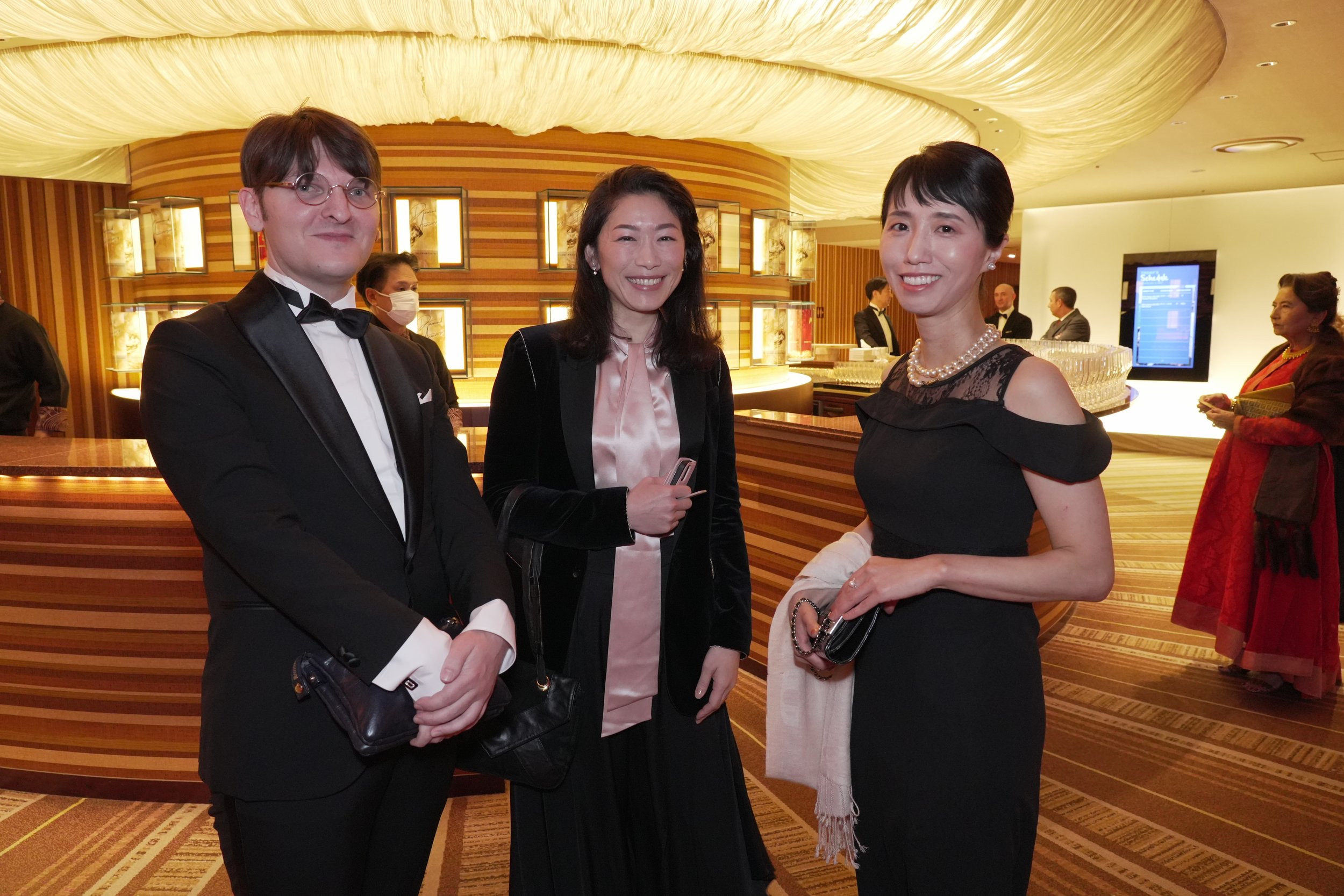

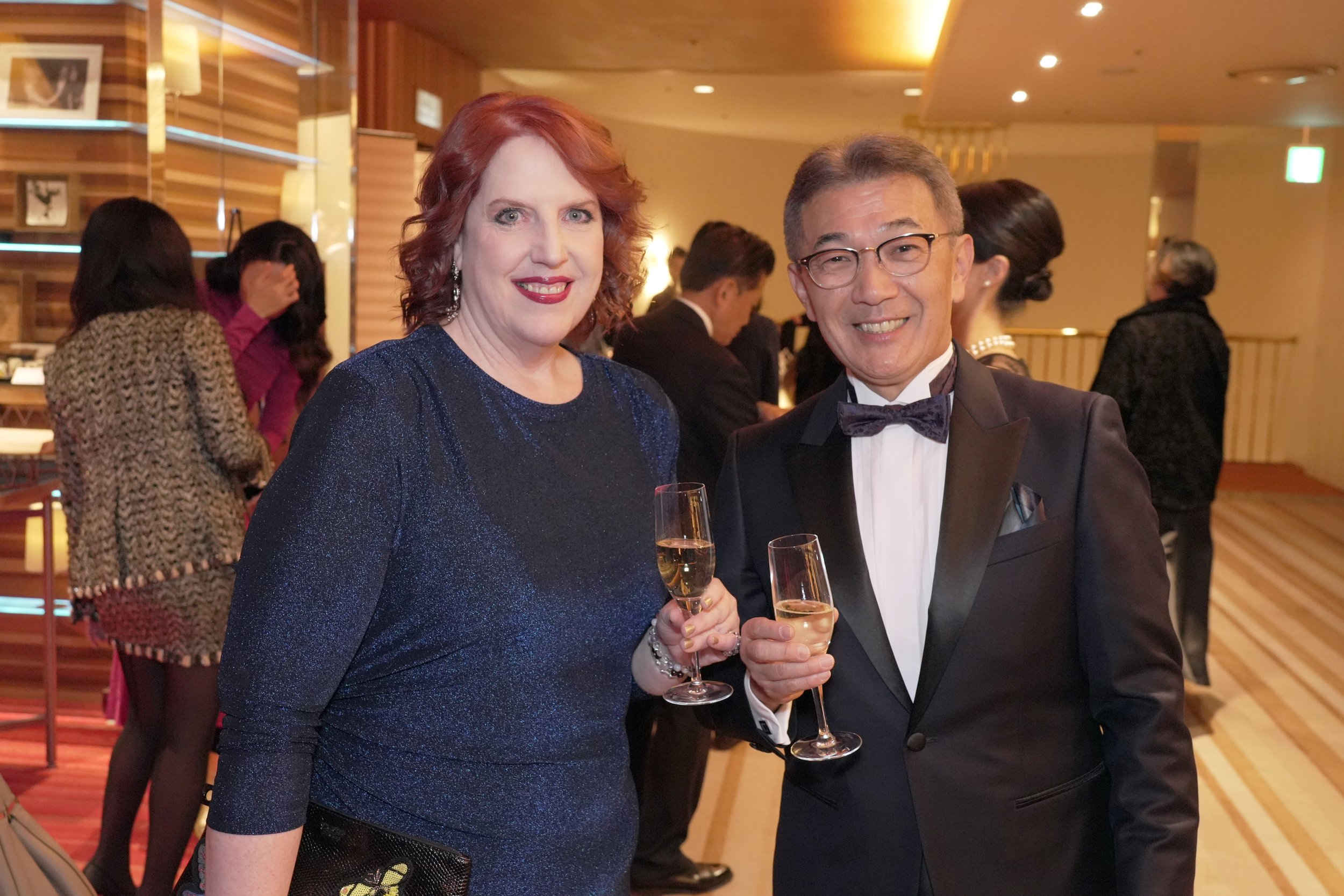
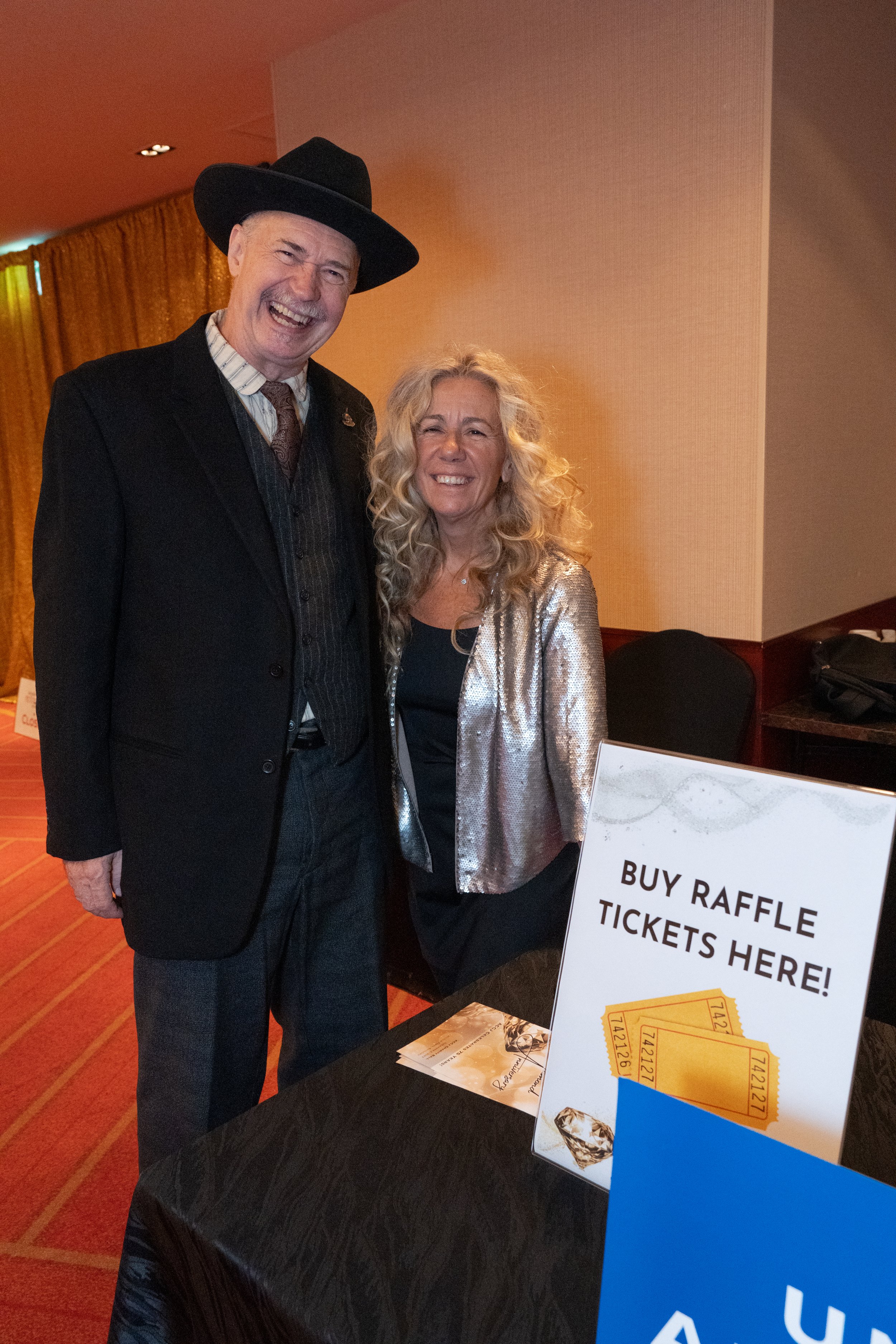
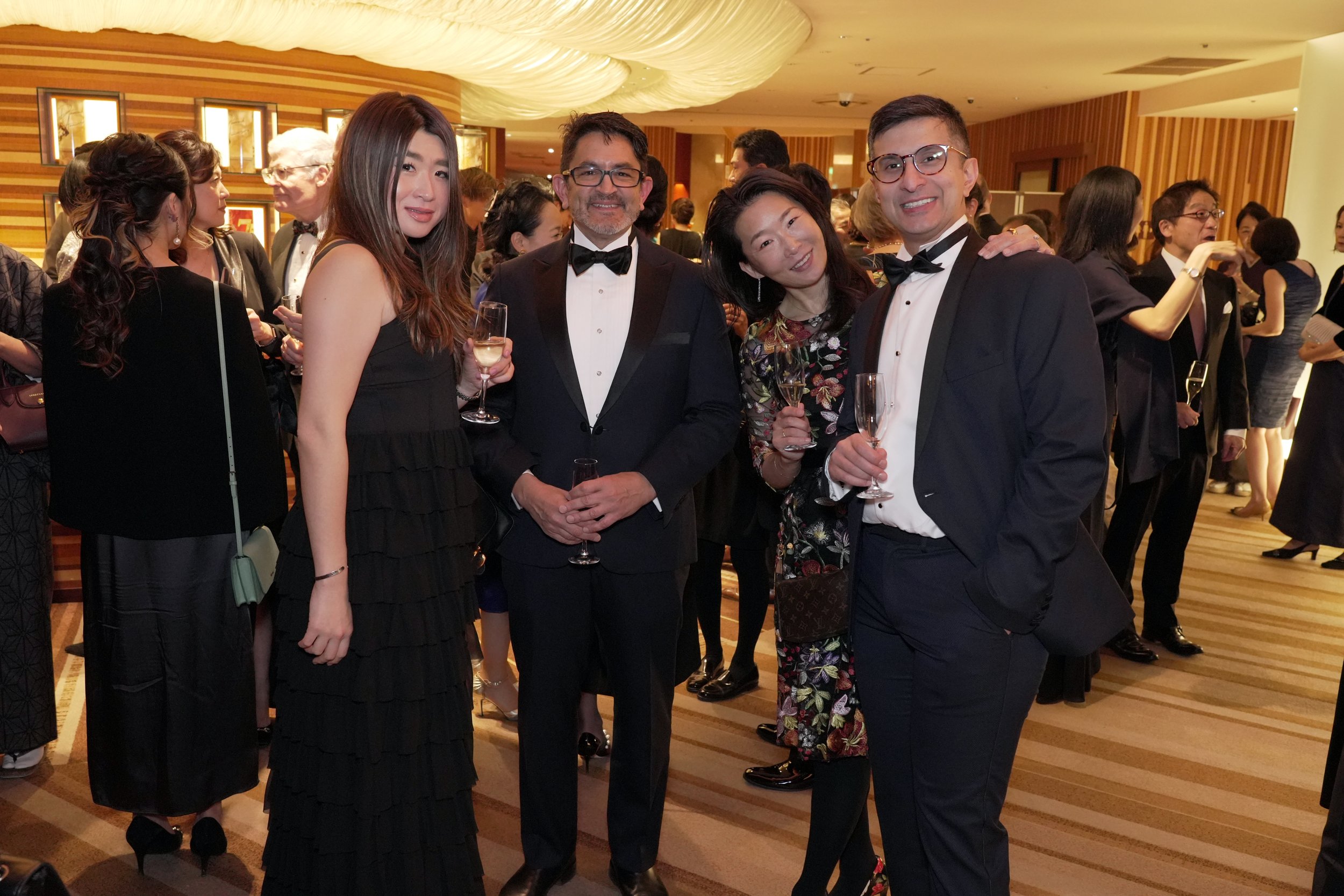
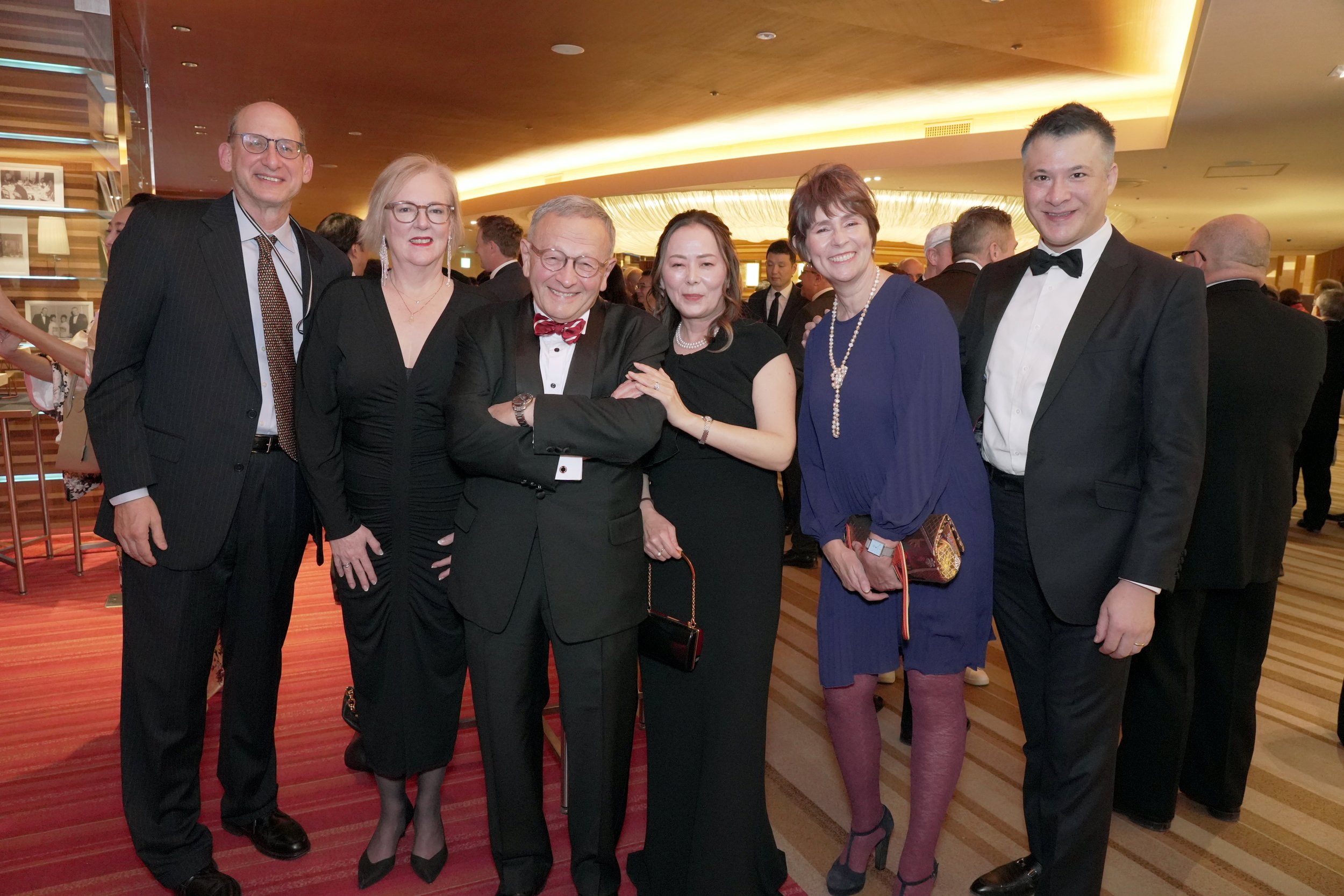
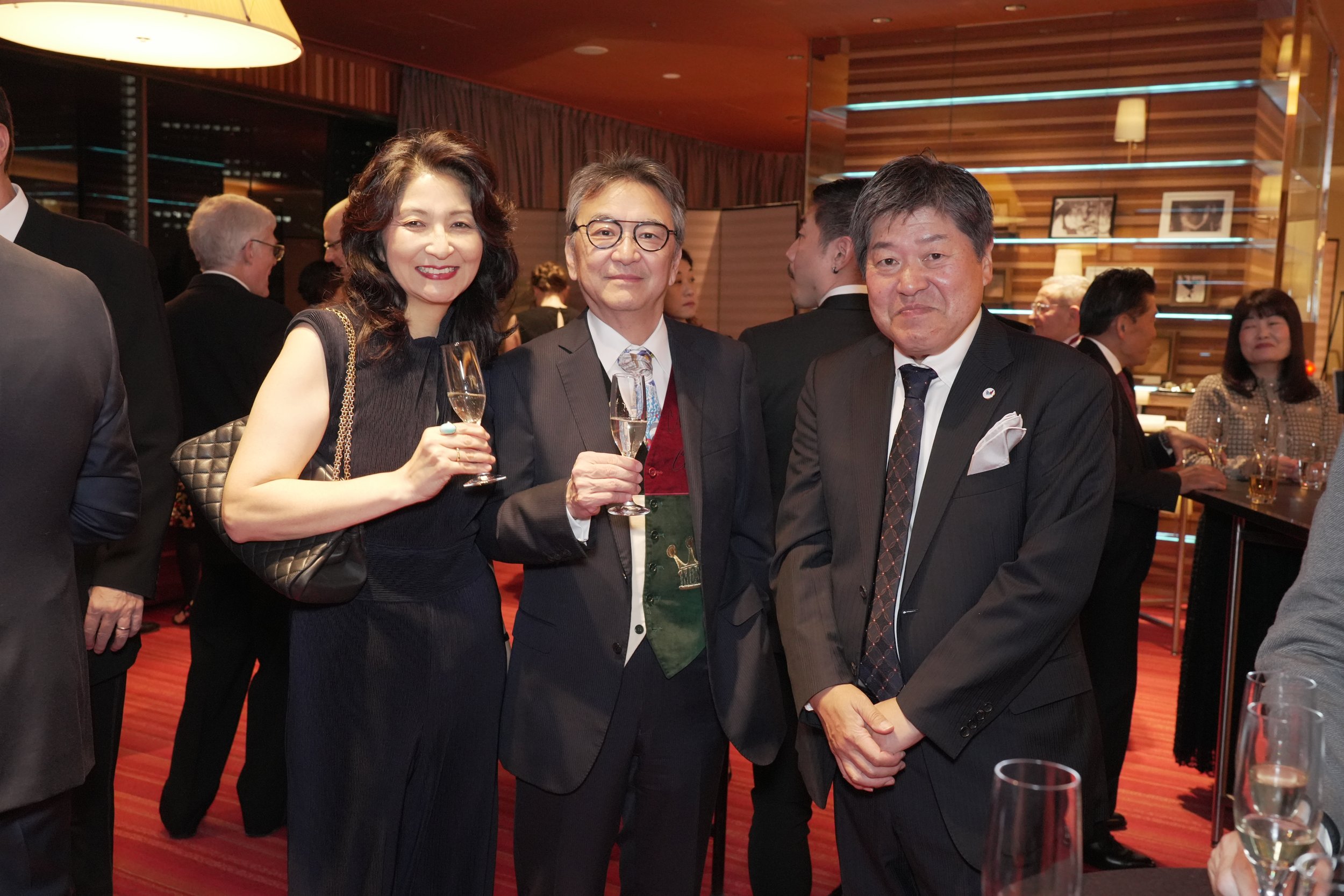
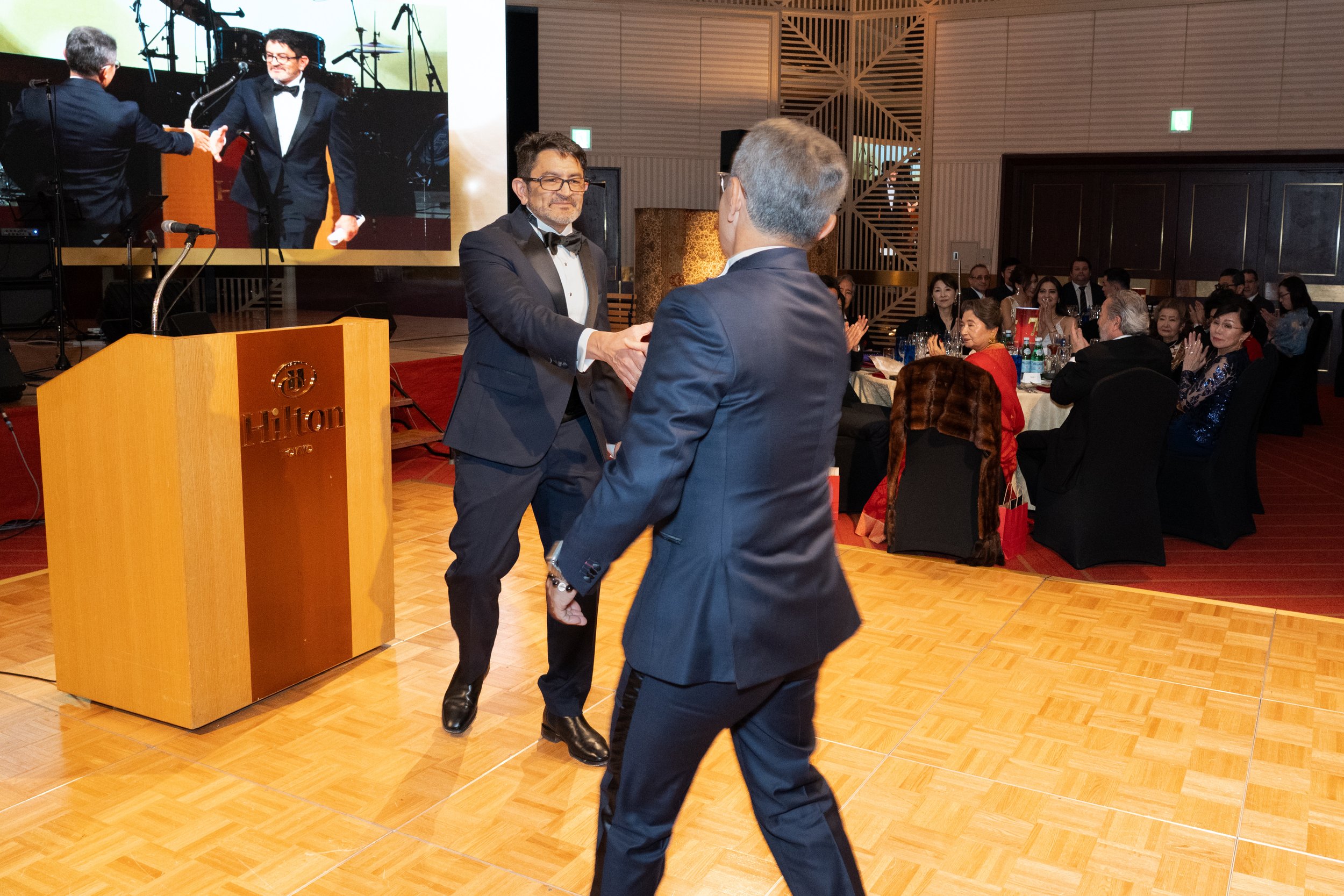
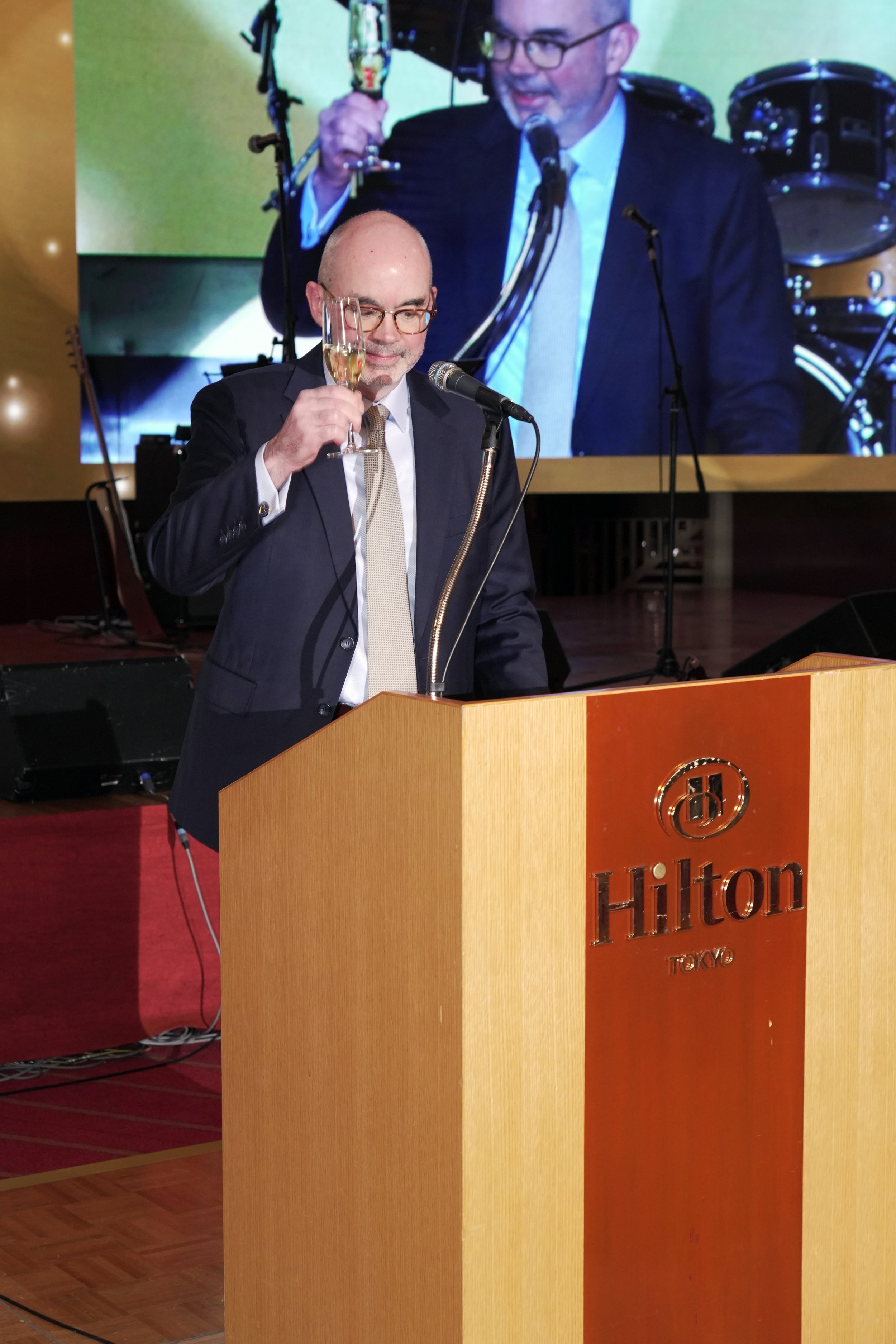
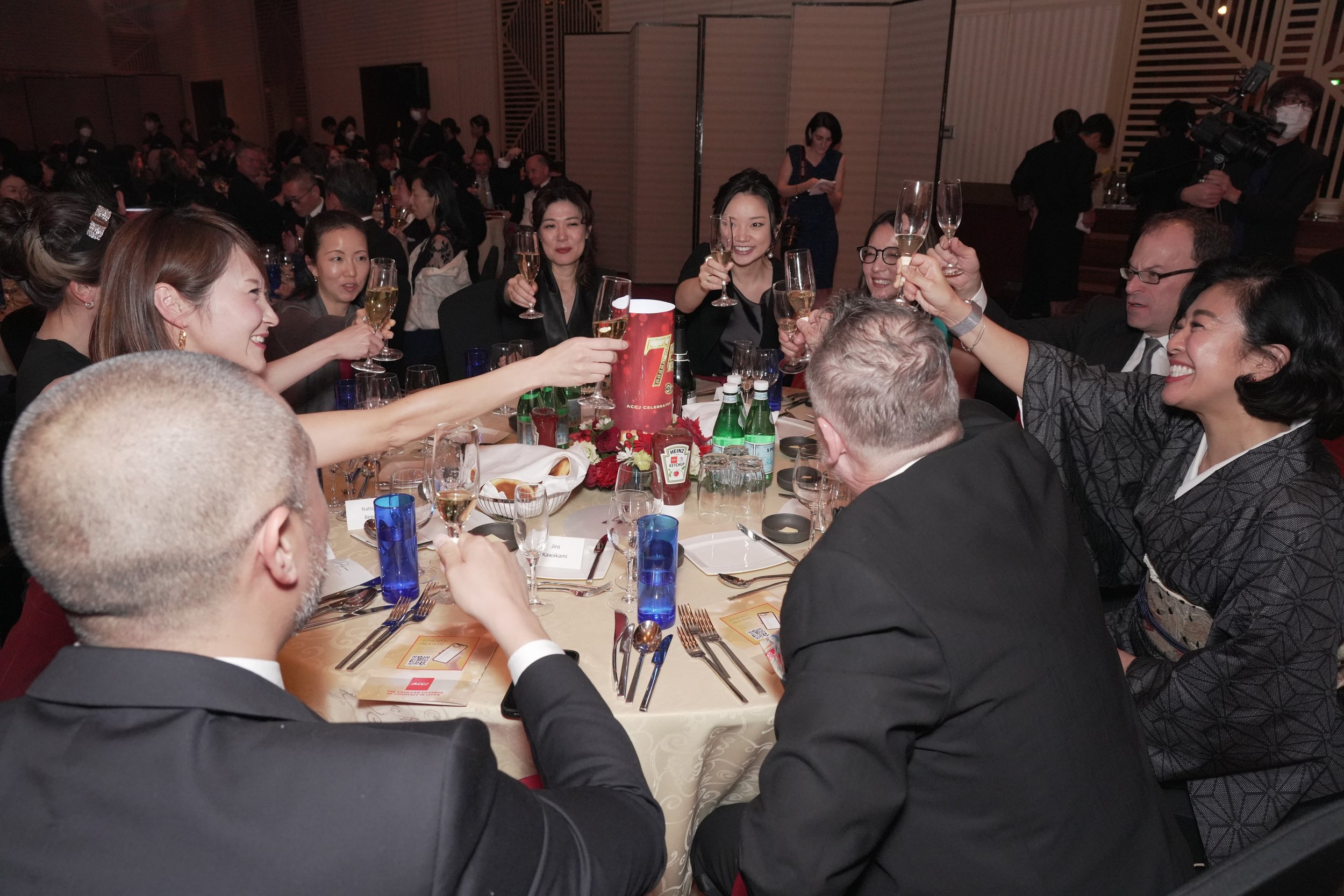
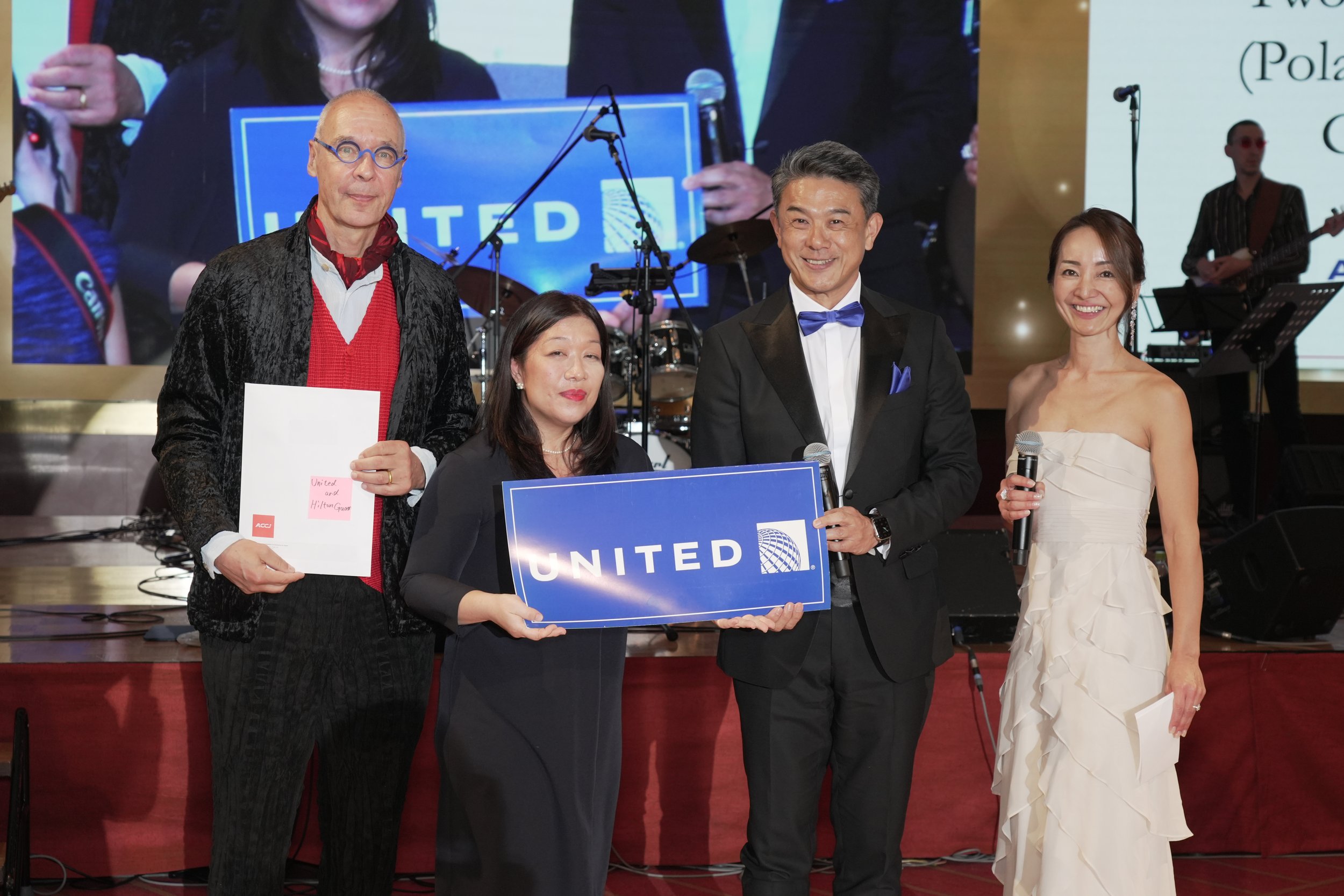
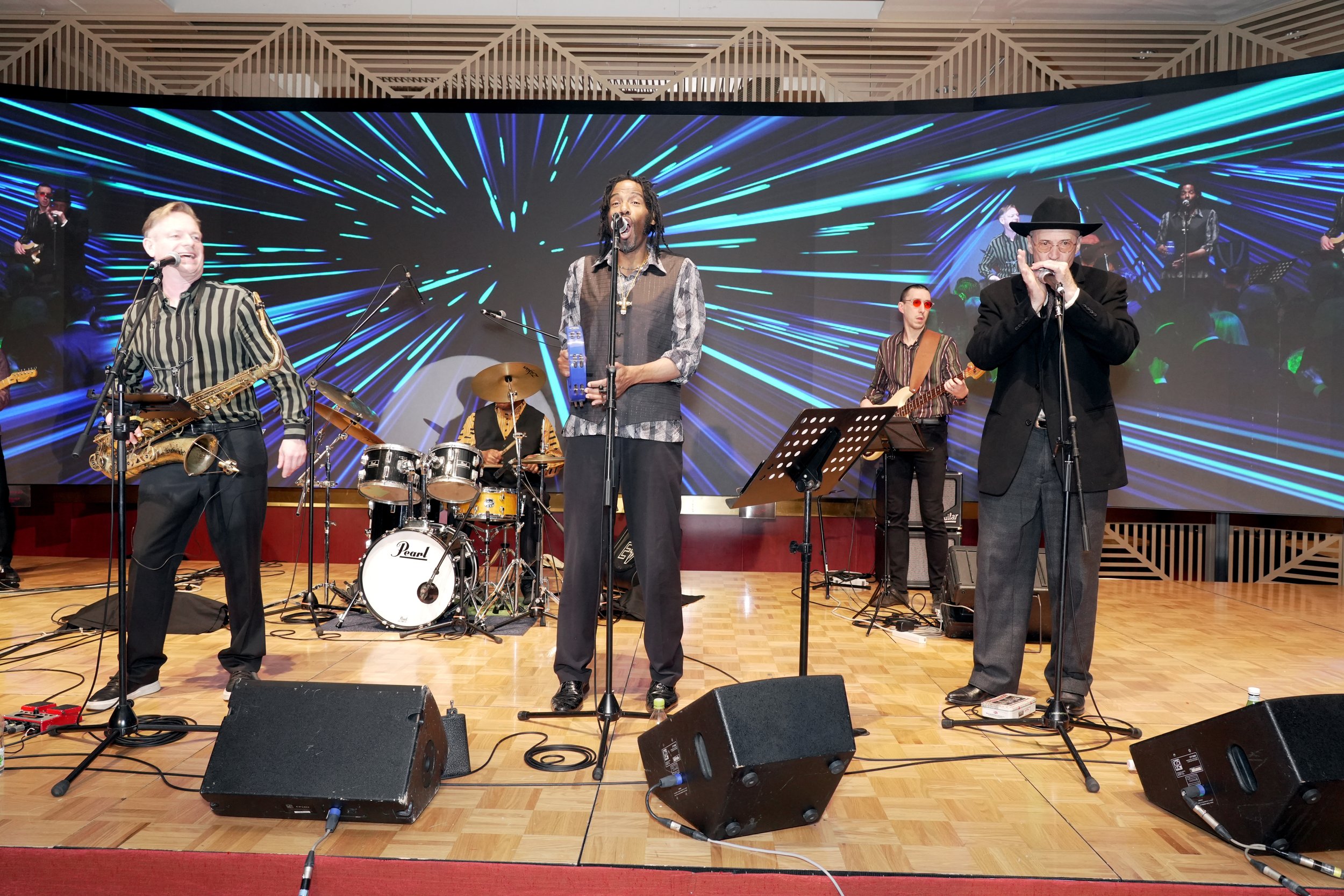
Photos: Media Sense K.K.
Legacy of Giving
The Charity Ball is not only one of the biggest events on the annual social calendar, it is also one of the ACCJ’s most important fundraisers. The money raised during the event is key to the chamber’s ability to support the community and help those in need.
The Charity Ball Committee works closely with the ACCJ Community Service Advisory Council to activate this effort with the generous participation of member companies and the membership at large. The annual Charity Ball is a time when we come together to share our success in Japan with each other and, at the same time, generate funding for charities qualified by a rigorous process.
This year we are proud to support the Mike Makino Fund for the Homeless, Food Bank Kansai, and the ACCJ Community Service Fund. We will also contribute to charities that help at-risk children, families, children’s hospitals and homes, and programs for these children.
“The ACCJ has a well-rounded mission that includes not only networking, information sharing, and advocacy, but also constructive engagement with the community.”
Together with the ACCJ staff, the Charity Ball Committee—Barbara Hancock, Kevin Naylor, Ryan Watson, Tomomi Fujita, Sonia Dhillon Marty, and William Titus—worked diligently to organize the event.
But success would not have been possible without the invaluable support of our generous sponsors, enthusiastic attendees, and the many individuals who took part in our online raffle and auction.
The committee extends its deepest gratitude to our sponsors and the ACCJ community for making a big difference in our ability to help those in need. We are grateful to each and every person involved, and extend a huge thank you to all!
President’s Circle Sponsor
Platinum Sponsor
Aflac
Bronze Sponsors
AIG Companies in Japan
Chevron International Gas Inc. Japan Branch
Prudential Holdings of Japan, Inc.
Silver Sponsor
Boeing Japan K.K.
Coca-Cola (Japan) Co., Ltd.
Mercury Sponsors
Morgan, Lewis, & Bockius LLP
NRK Sogo Kikaku Co. Ltd.
Prize Sponsors
Diamond
Air Canada
CIC Toranomon G.K.
Delta Air Lines
Hakuba Hotel Group
Herman Miller Japan, Ltd.
Ichijiku
KPG Hotel & Resort
Kraft Heinz Japan
Marriott International, Inc.
MediaSense K.K.
Ratko Back Painting
The Peninsula Tokyo
United Airlines, Inc.
Vega Project K.K.
Ruby
Grand Hyatt Tokyo
Hilton Nagoya
Park Hyatt Tokyo
There’s No Accounting for Taste
Sapphire
Amway Japan G.K.
ELC Japan K.K. (Estée Lauder)
Fukushima Garo
Good Morning Tokyo Co., Ltd.
Hakkaisan Brewery
Moegi
Simon Dalby Art
Tokyo American Club
Emerald
Andaz
Asian Tigers Japan
Conrad Tokyo
DevilCraft
Eastern Carpets
Elana Jade
Godiva Japan Inc.
grapeoff
Hilton Osaka
Hilton Tokyo
Hilton Tokyo Bay
InterContinental Osaka
Japan Design Collective
Jupiter International Corporation
McLarty Associates
Minamiaoyama7chome Gyoseishoshi Office
pearls.jp
Riedel Japan
Shop Japan
Takata Co., Ltd.
The Strings by InterContinental Tokyo
Temple University Japan Campus
Yellow Toes Art Gallery
2022 Person of the Year: Akio Mimura
On November 9, 2023, the American Chamber of Commerce in Japan (ACCJ) recognized Akio Mimura as the 2022 ACCJ Person of the Year. He was chosen for his efforts to bring the Japanese and international business communities closer together during his nine years as chairman of the Japan Chamber of Commerce and Industry (JCCI).
The ACCJ honors the Japan Chamber of Commerce and Industry honorary chairman for his enduring support of international businesses in Japan.
Photos by Miki Kawaguchi/LIFE.14
From left: ACCJ Executive Director Laura Younger, Akio Mimura, and ACCJ President Om Prakash
On November 9, 2023, the American Chamber of Commerce in Japan (ACCJ) recognized Akio Mimura as the 2022 ACCJ Person of the Year. He was chosen for his efforts to bring the Japanese and international business communities closer together during his nine years as chairman of the Japan Chamber of Commerce and Industry (JCCI).
The person of the year is normally honored in spring, but this year’s event was delayed due to the coronavirus pandemic.
During a special luncheon at The Place of Tokyo, the former chairman and president of Nippon Steel Corporation spoke about his long career.
The event began with a VIP session where ACCJ leaders greeted Mimura, after which ACCJ Executive Director Laura Younger welcomed guests and provided background about the award. ACCJ President Om Prakash delivered remarks and invited Mimura to the podium.
“I am truly honored to be nominated as the 2022 ACCJ Person of the Year, because 2022 was the year I concluded my 60-year business career, 51 years in the Nippon Steel Corporation and nine years as the chairman of the JCCI,” Mimura began.
“The last nine years have been especially worthwhile periods in my life,” he continued, noting that the coronavirus pandemic, during which he closed out his time as JCCI chairman, required action and guidance to protect the most vulnerable people and businesses, especially small and medium-sized enterprises (SMEs).
“I devoted my energy to three initiatives,” explained Mimura, who requested:
- Balanced measures to contain Covid-19 that allow free economic activity
- All possible measures from government to ensure that businesses survive
- SMEs use the pandemic as a wake-up call and promote self-reformation
“Luckily, Covid-19 is finally coming to an end, and most SMEs were able to preserve their business continuation,” he said. “Overall unemployment in Japan was kept very low, at 2–3 percent. Our real challenge is to position this pandemic and the worldwide inflation as a turning point, and to rejuvenate the Japanese economy, which has been stagnant for the past quarter century.”
Mimura shared that another great memory is encountering the philosophy of Eiichi Shibusawa. Born in 1840, Shibusawa played a key part in business development during the Meiji Period (1868–1912) and is often referred to as the father of Japanese capitalism.
“He was involved in the founding of 481 companies and played an active role in the launch of 600 social contribution institutes. Can you believe it?”
The latter especially resonates with Mimura.
“In recent years, I have been very heartened to see the increasing global interest in [strategic development goals] and stakeholder capitalism,” he said. “However, I have personally felt dissatisfied with the fact that this interest often remains only on the surface, limited to general overviews or investor-related presentations without translating into concrete actions.”
Shibusawa, he notes, insisted earnestly that business leaders should pursue profit but also contribute to the public interest, namely by enriching society and making people happier.
“He was not only a person of action but also a visionary leader,” Mimura said. “We business leaders must somehow achieve the harmony of private and public interests in our own way.”
Surf the DX Wave
A digital transformation (DX) wave is sweeping across Japan, but learning to surf that wave takes experience. Another group of islands that know a bit about surfing, and have ridden DX to their advantage, could be a guide.
Five big lessons for Japan from Hawaii
As Japan’s fledgling Digital Agency finds its way through its second year of existence, and the Tokyo Metropolitan Government’s new start-up strategy takes hold, a digital transformation (DX) wave is sweeping across the country. Learning to surf that wave takes experience, however, and another group of islands that know a bit about surfing, and have ridden DX to their advantage, could be a guide for Japan.
How the Hawaiian tourism industry found renewed life through digital transformation was the subject of a February 28 event held at Tokyo American Club and online, and entitled How to Surf the DX Wave: Five Big Lessons for Japan from Hawaii. The American Chamber of Commerce in Japan Tourism and Hospitality Committee luncheon—co-hosted by the Digital Transformation and the Information, Communications, and Technology Committees—welcomed Mayumi Nakamura and Mike Birt of Ascent Partners, LLC to discuss the restructuring of Hawaii’s tourism management system.
When the Covid-19 pandemic forced a total shutdown of travel, tourism hot spots such as Honolulu, which had welcomed a record 10.4 million visitors in 2019, went from overtourism to dead empty in just a few days. The islands fell quiet. And when tourism returned in 2021, it was not the same.
Recovering from Wipeout
“As people started coming back, the domestic travel industry was just a madhouse,” Birt explained. It was clear that the pandemic had left Hawaii’s tourism industry scarred and unprepared for the influx. Change was needed.
The seeds for change were planted even earlier. When heavy storms hit Haena State Park, on the island of Kauai, in April 2018, major access roads were shut down and neither tourists nor locals could enter.
It was a needed pause, however. Before the disaster, some 3,000 tourists had visited daily, leaving little room for Hawaiians. “There was some conflict there, and many people couldn’t enjoy their own homeland,” Nakamura explained.
While the storm was a multi-million-dollar disaster for many, others saw it as divine intervention, an opportunity to reappraise the management of state parks and give greater consideration to the balance of tourists and locals.
When the decision was made to transform the system, the Hawaiian government approached Ascent Partners for help. Nakamura led a team that designed a timed-entry reservation system. Entry was restricted to those with reservations, and daily tourist admission was capped. This allowed locals more opportunities to enjoy their own land. Greater emphasis was also placed on hiking the trails and evoking the experience of the natural land as the Native Hawaiians saw it.
Due to the pandemic, all the work had to be done remotely. The Hawaii project was run from Seattle, while the software development team was in India and various support staff were scattered across the US mainland.
The project was a great success. Not only were there societal benefits, but economic ones as well. The state brought in 250 percent of its projected tourism revenue in the first year.
The island of Kauai, home to Haena State Park
Model for DX
Birt believes the fact that this project could be carried out remotely with such great success shows the potential for adapting the approach to other countries, with each following their own philosophy of reimagining post-pandemic tourism.
“It became a model for how to scale and develop very effective software digital transformation projects that can literally span the world,” he explained. “Destination management is a key element—and this isn’t just Hawaii. Venice, Iceland, Amsterdam … there are a number of [places] that have really had to work on how to manage their destination so that it doesn’t become overrun, and the community can still enjoy where they live.”
“It became a model for how to scale and develop very effective software digital transformation projects that can literally span the world.”
Birt and Nakamura said they learned a lot during their three years working with the Hawaiian state government. They shared five lessons which they believe Japan could put into action to transform its own post-pandemic tourism.
Lesson 1: DX requires leadership and vision
“Without a vision, none of the people around [you] can support the project. In the case of Hawaii, it was a return of aloha spirit,” Nakamura said. What made the project possible, she added, was that both the state government and private individuals were on board and committed to using the pandemic to take a bold step.
Lesson 2: DX has customers—and adversaries
“The state parks are literally part of [Hawaii’s] soul; Hawaiians think of their parks as almost a living thing,” Birt explained. Undertaking such a large-scale project, therefore, brought together many parties with a vested interest, whether emotional or financial.
Naturally, with this came those who strongly opposed the transformation. But nobody, Birt and Nakamura acknowledged, knowingly played the role of adversary; they resisted change simply for self-preservation. What saved the project from failure was that powerful friends in the Hawaiian state government shared the vision and supported it from the start.
Lesson 3: Technology is powerful
DX is not a simple one-and-done operation. It is an everyday effort that must be constantly analyzed and adjusted to fit the needs of the project. The DX wave does not stop or slow down. Everyone must be skilled and educated to properly participate in the journey. Questions must be constantly asked. In the case of the Hawaii project: Where are the tourists going? How are they going? How could communication be improved? What could smooth entrance into the parks?
Lesson 4: Expectations change
While the aloha spirit is the genuine treasure of Hawaii, it must always be met in balance with malama, the respect for the state and environment, as well as the customs and culture that come with it. You receive the generosity of Hawaii, but you are obliged to pay it back in appreciation. The same balance is sought in DX, where it has the potential to bring revenue and benefits, but we must be careful to not kill the goose that lays the golden eggs.
Lesson 5: DX waves won’t stop, learn to surf them
Lastly, there must be an emphasis on change, and an understanding that there is no final resting point in DX. Nakamura referred to the decline of Facebook and the rise of the artificial intelligence tool ChatGPT as examples of the unpredictable nature of technology. “You have to be ready to ride the waves as they comes,” she said. “Be adaptable, be adjustable. Don’t think of it as a destination, but as a journey.”
Winds of Change
After two years in virtual space, one of the largest annual events held by the ACCJ returned to its traditional in-person format on December 3, when chamber members and guests gathered at the Hilton Tokyo in Shinjuku for Chicago: An Evening in the Windy City.
First in-person Charity Ball since 2019 brings the ACCJ together
After two years in virtual space, one of the largest annual events held by the American Chamber of Commerce in Japan (ACCJ) returned to its traditional in-person format on December 3, when chamber members and guests gathered at the Hilton Tokyo in Shinjuku for Chicago: An Evening in the Windy City.
The first live Charity Ball since 2019 kept some virtual aspects of the pandemic galas to give the whole chamber community—across the Tokyo, Chubu, and Kansai chapters—the opportunity to participate.
The goal was to raise funds for charity while also bringing one of the ACCJ’s most important social events back to life, and the evening was a roaring success thanks to a great venue; spectacular entertainment, inspired food, wine, and spirits; and a special guest: Chicago’s own Rahm Emanuel, US ambassador to Japan.
The Charity Ball Committee, with the help of the amazing ACCJ staff, worked together to make this event happen. But it would not have been possible without the support of our generous sponsors, all those who attended, and the many people who participated online in our raffle and auction.
With everyone’s support, we raised ¥4.5 million for charities, making a big difference in our ability to help those in need.
The Charity Ball Committee cannot thank our sponsors and the ACCJ community enough for making the event a success. We are grateful to each and every person involved, and extend a huge thank you to all!
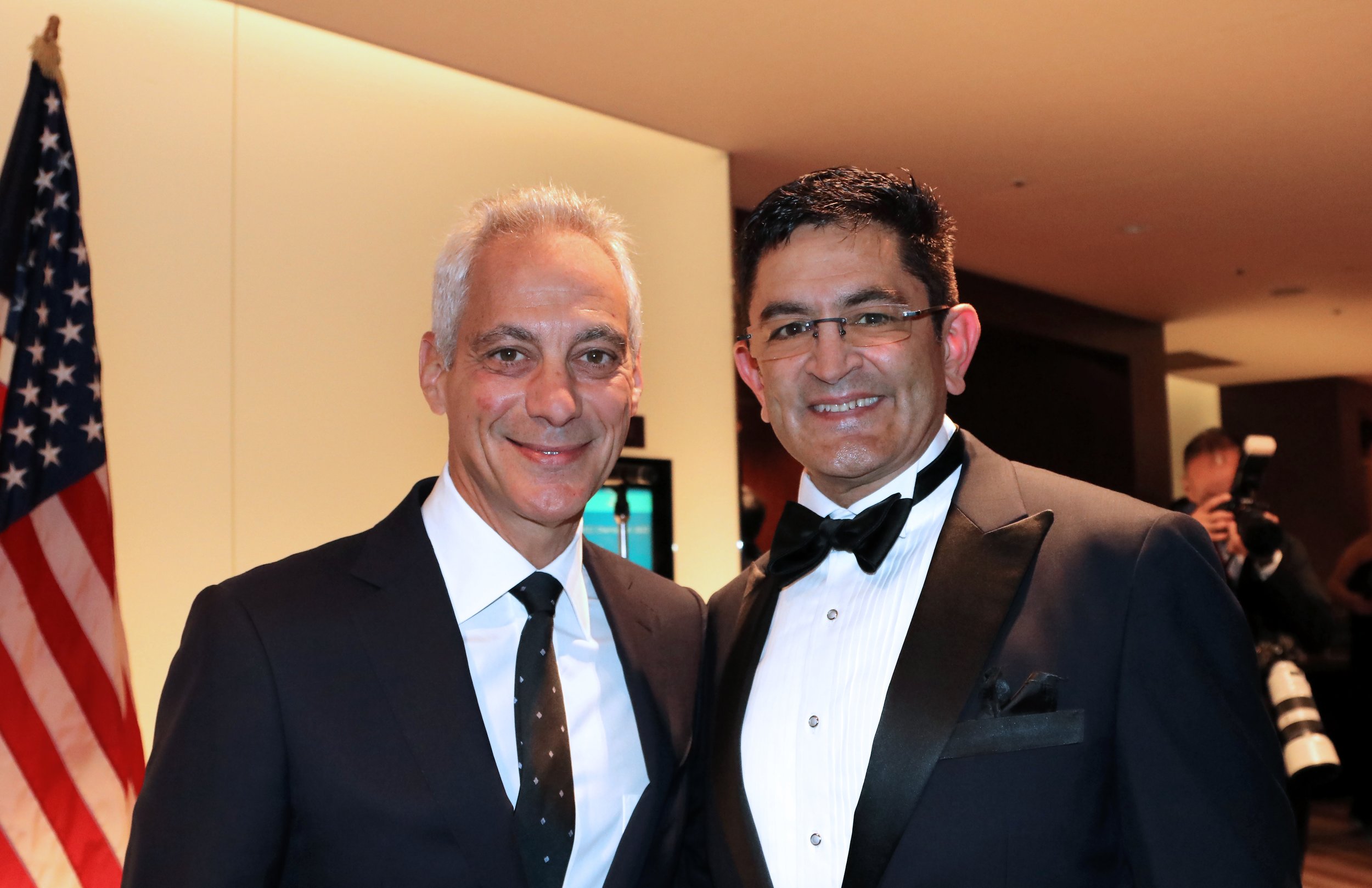

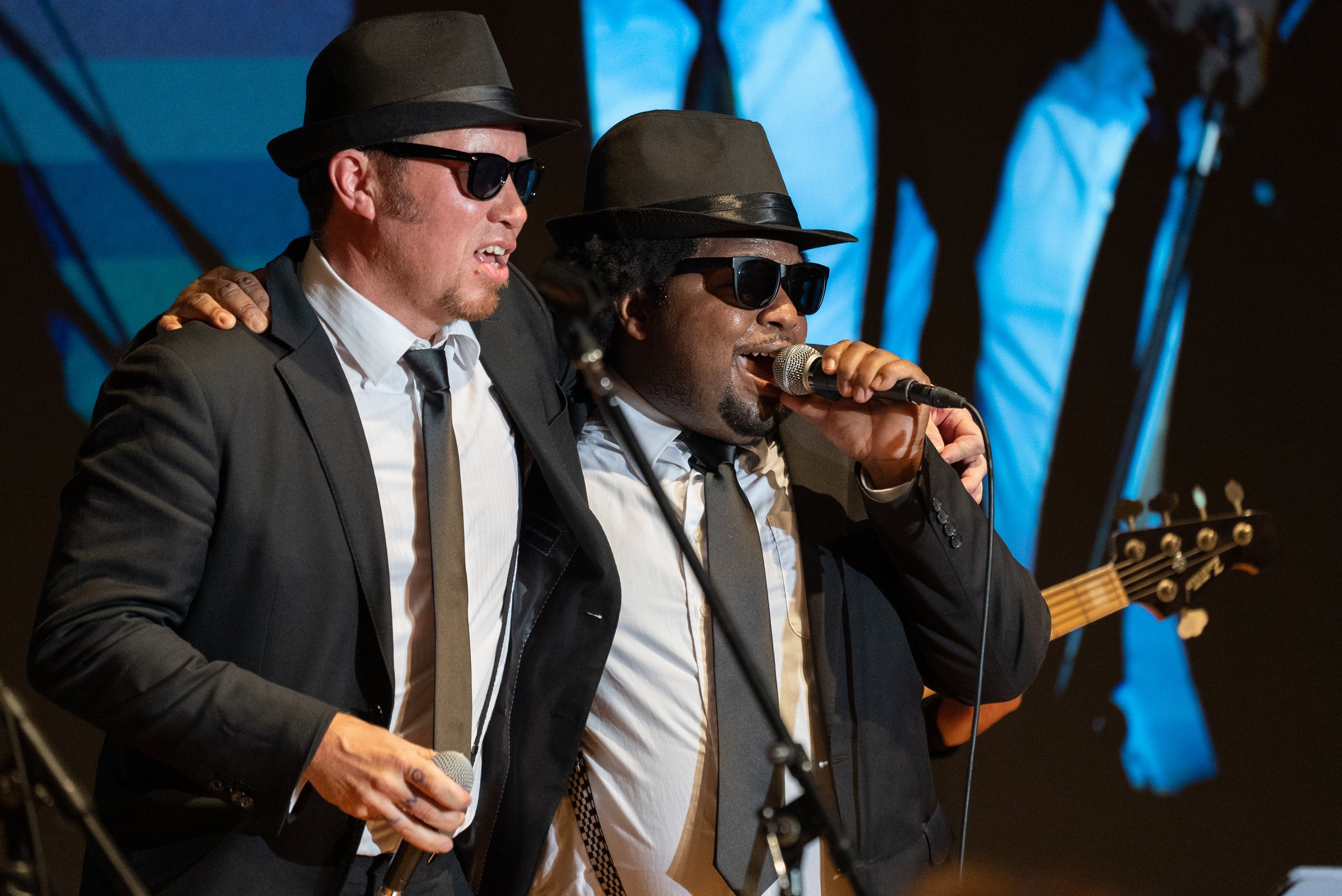
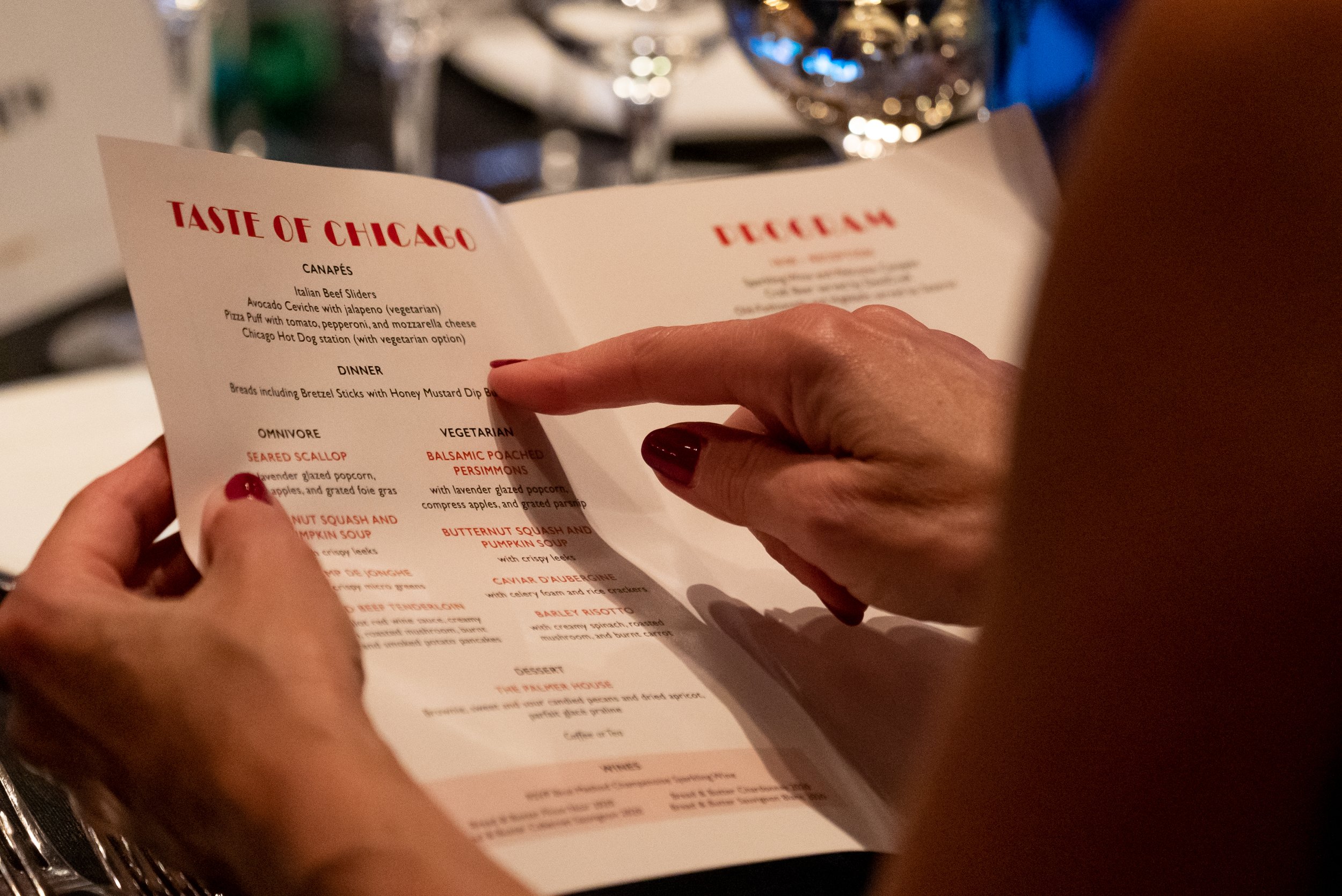

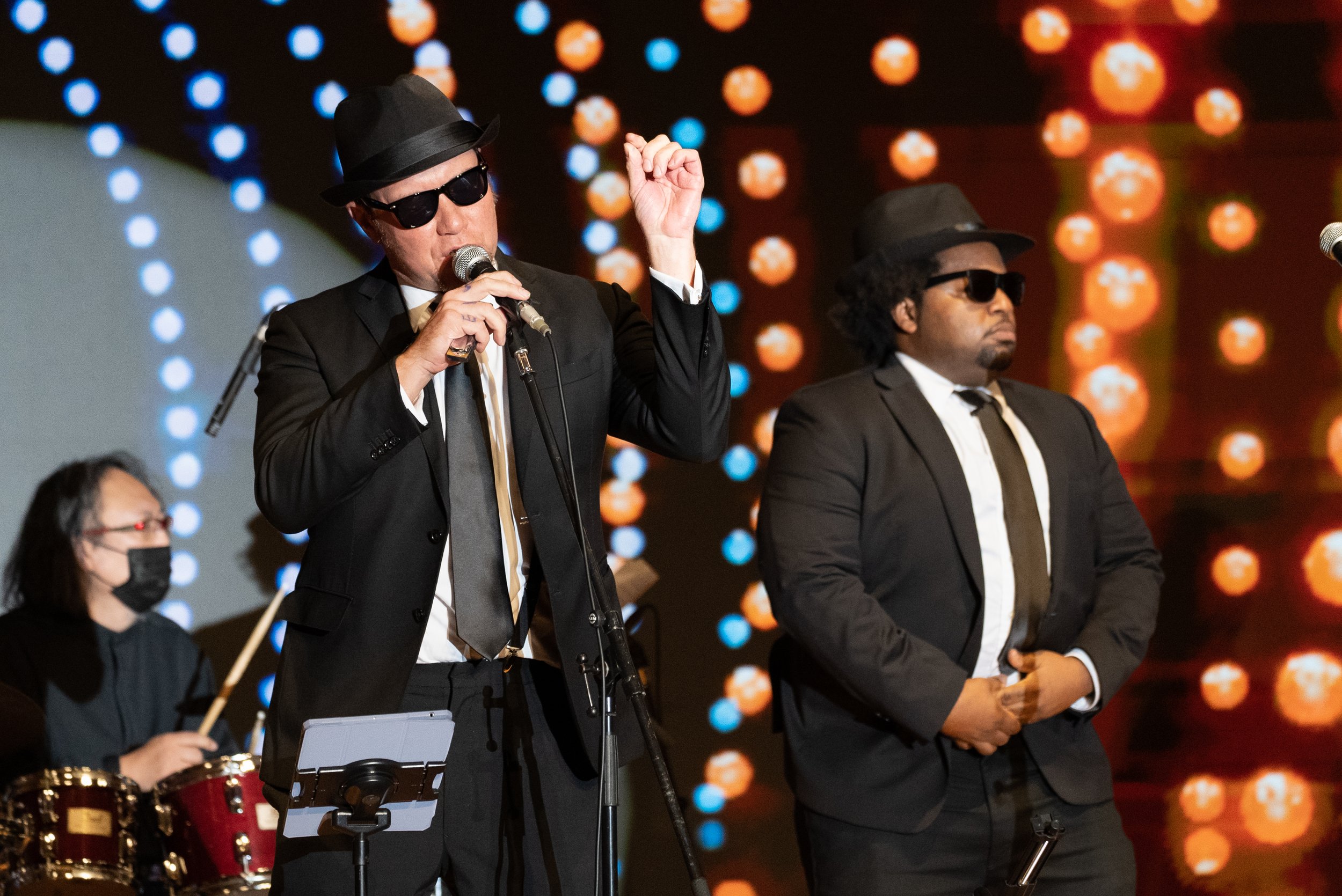


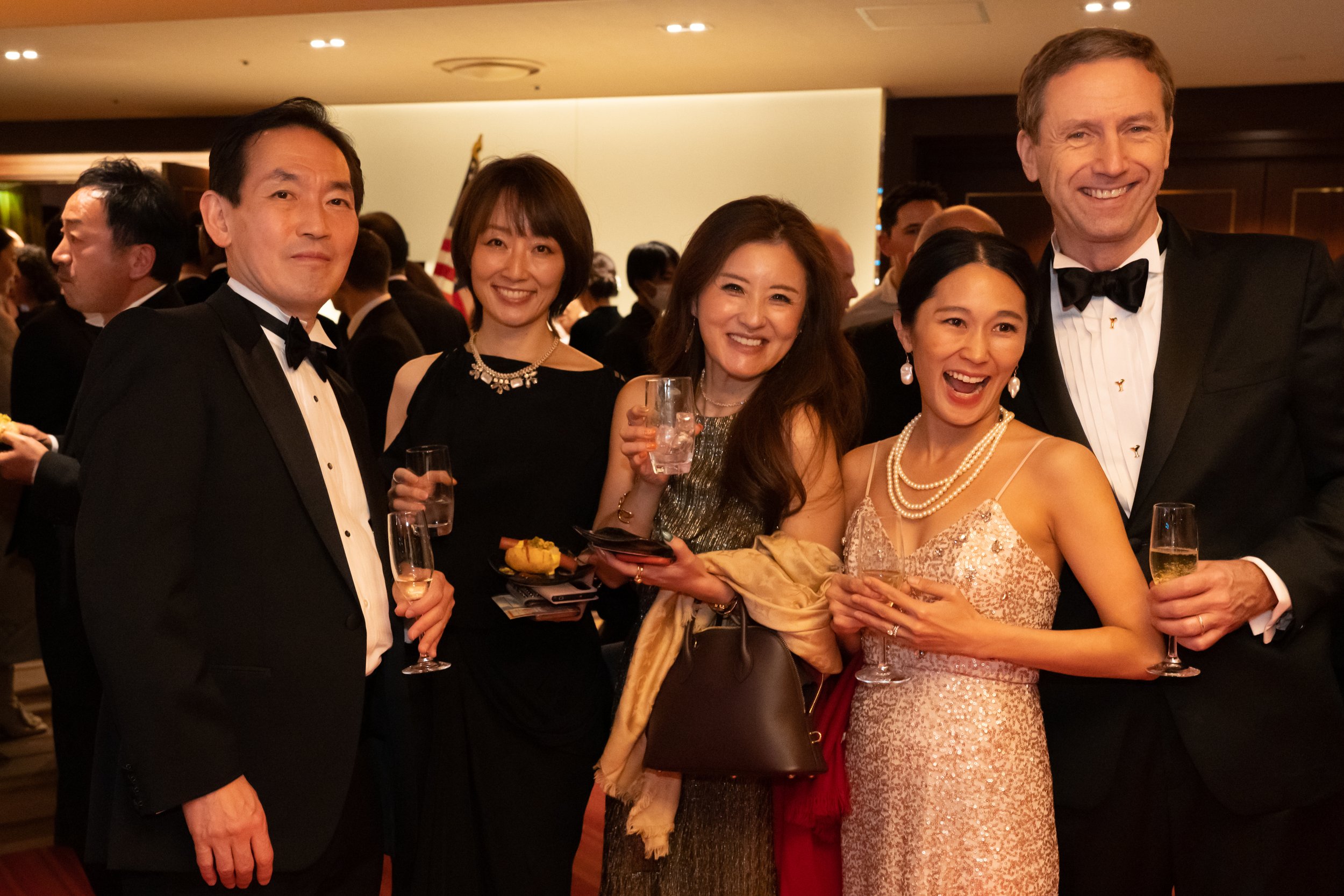
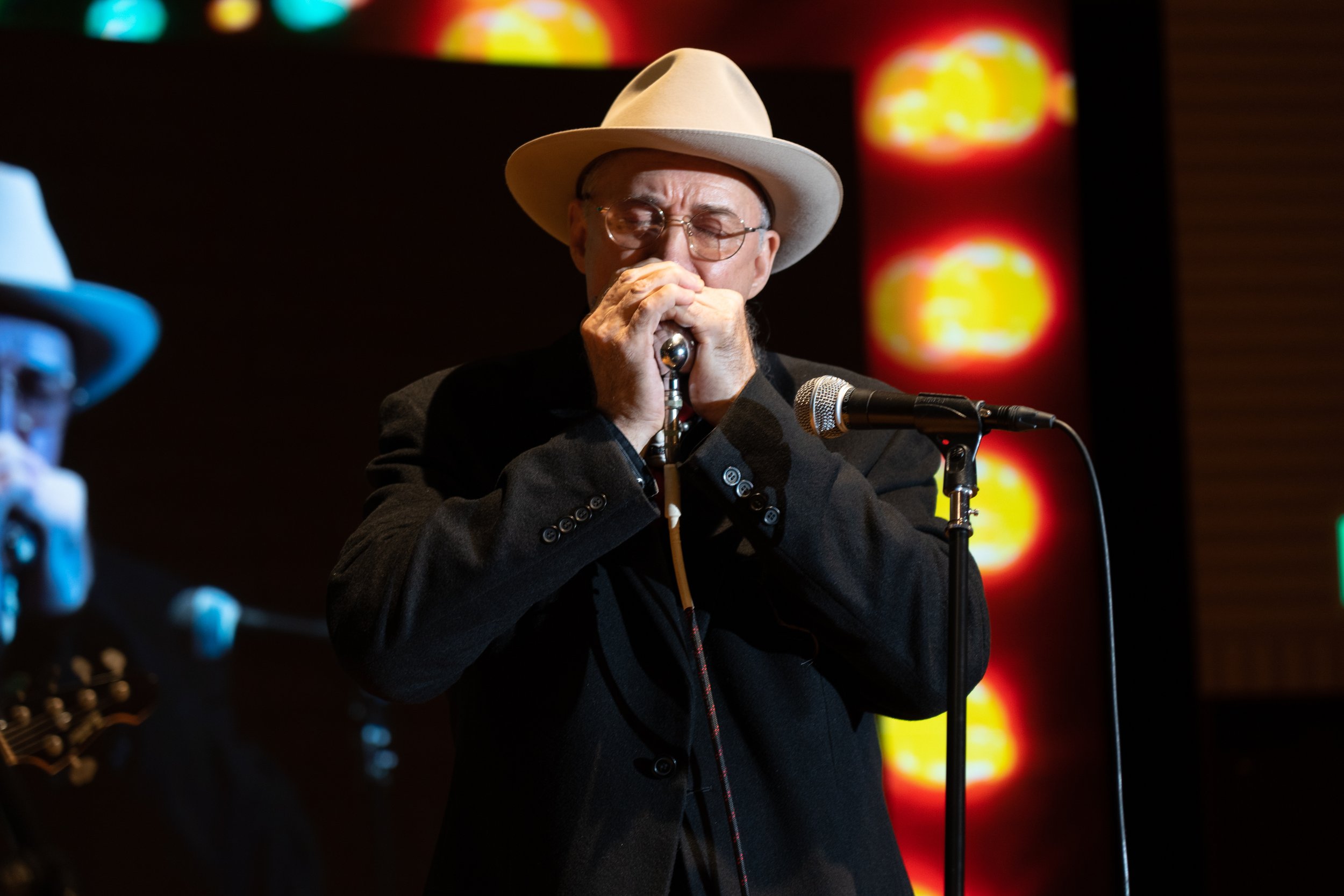
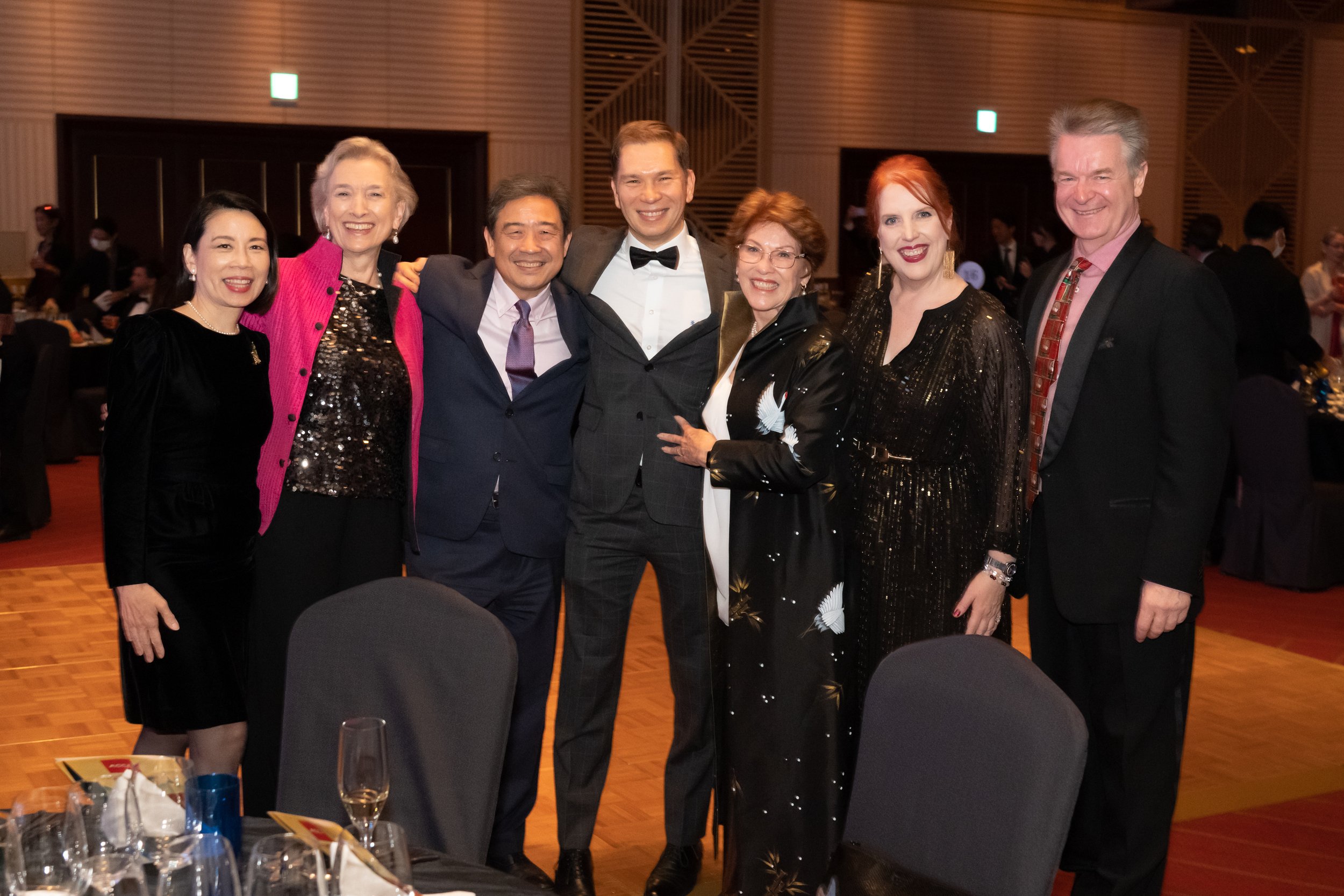
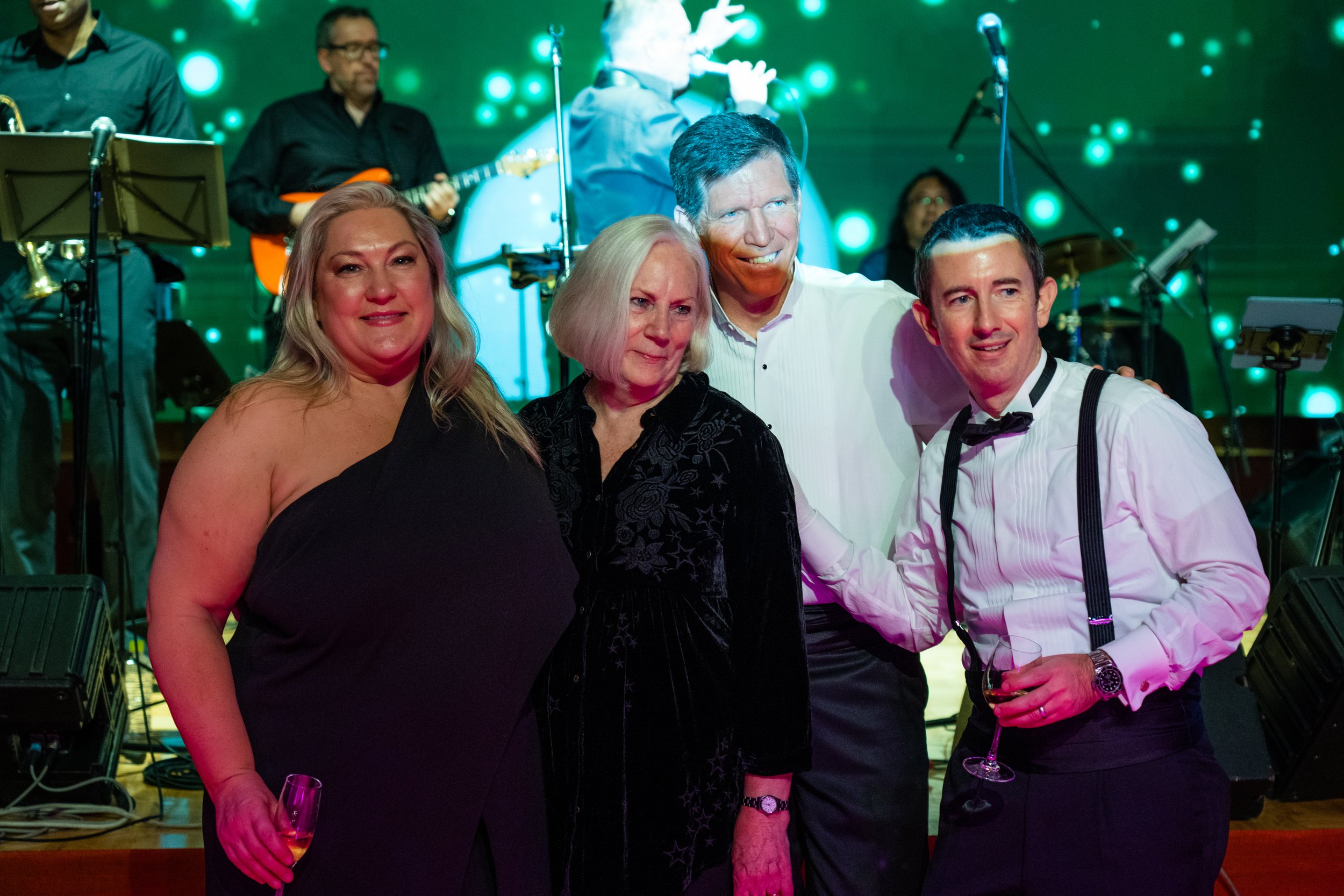
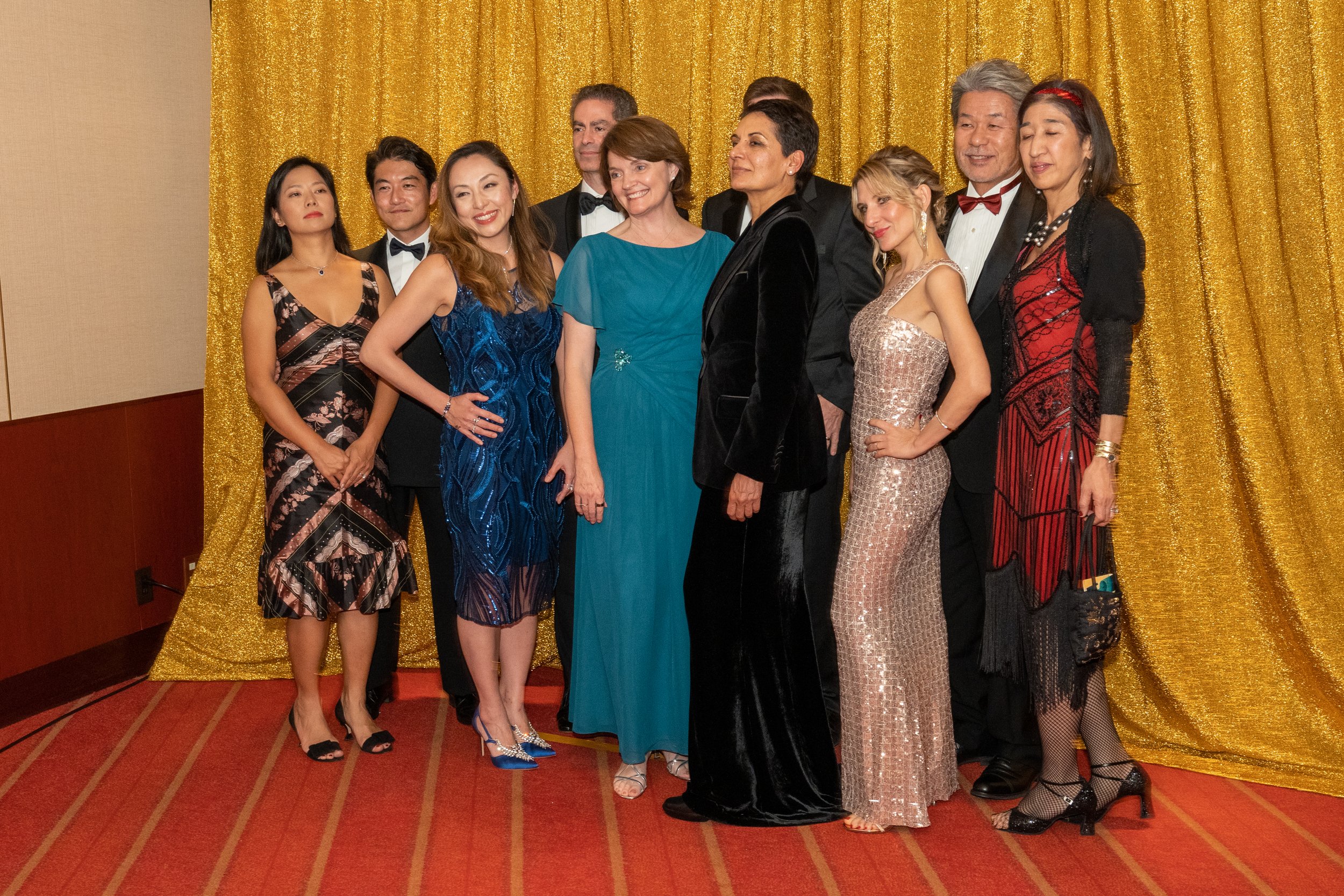
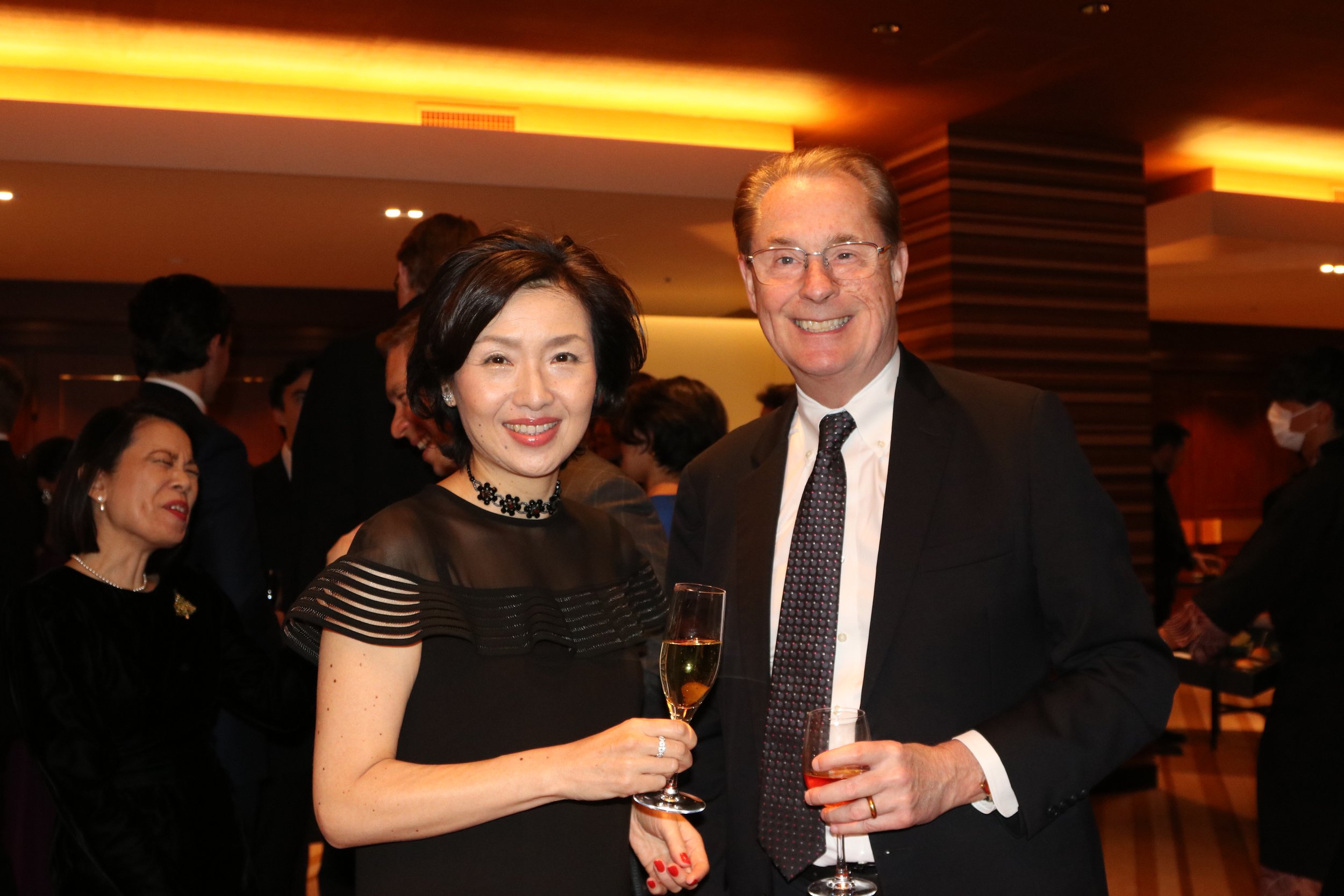


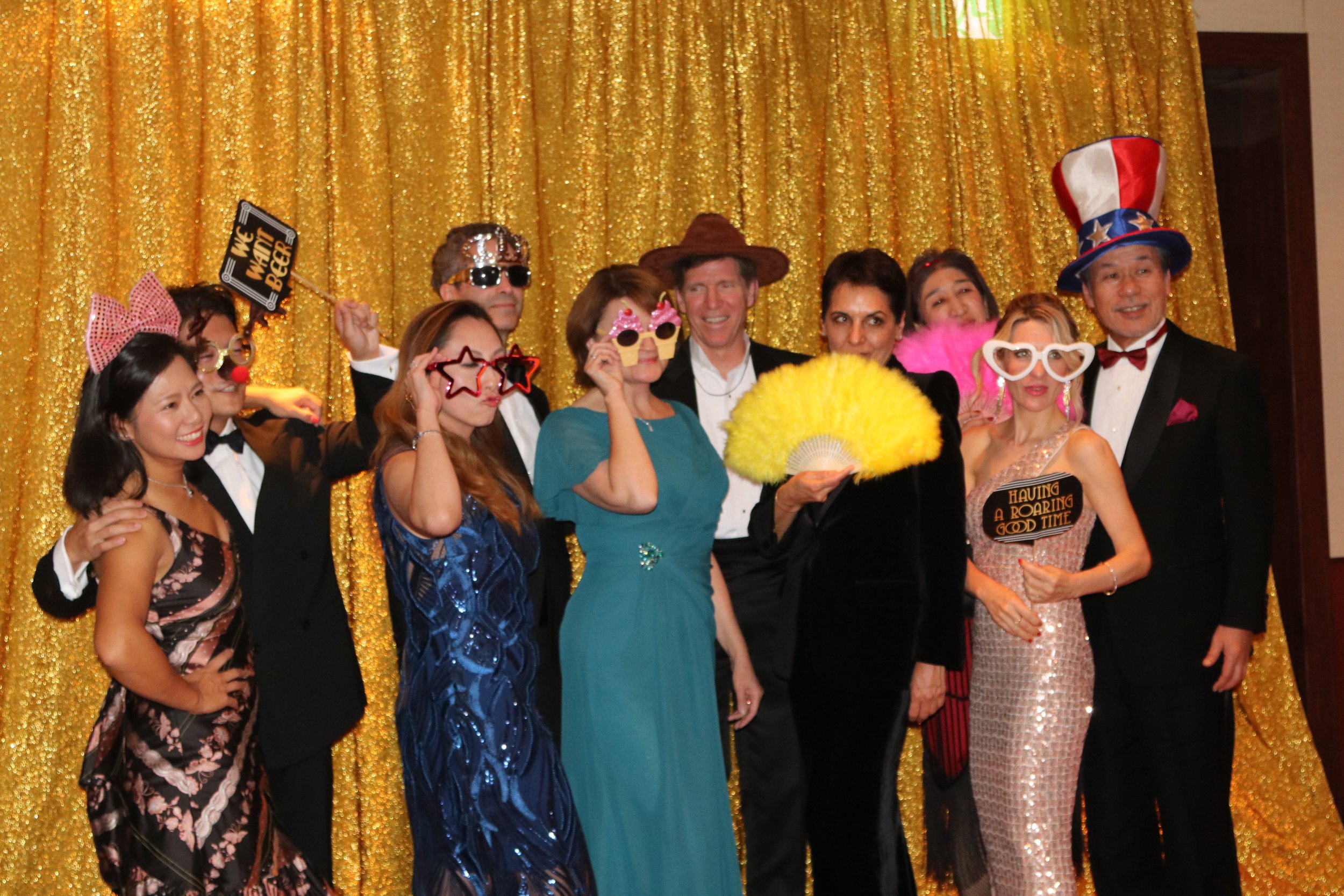
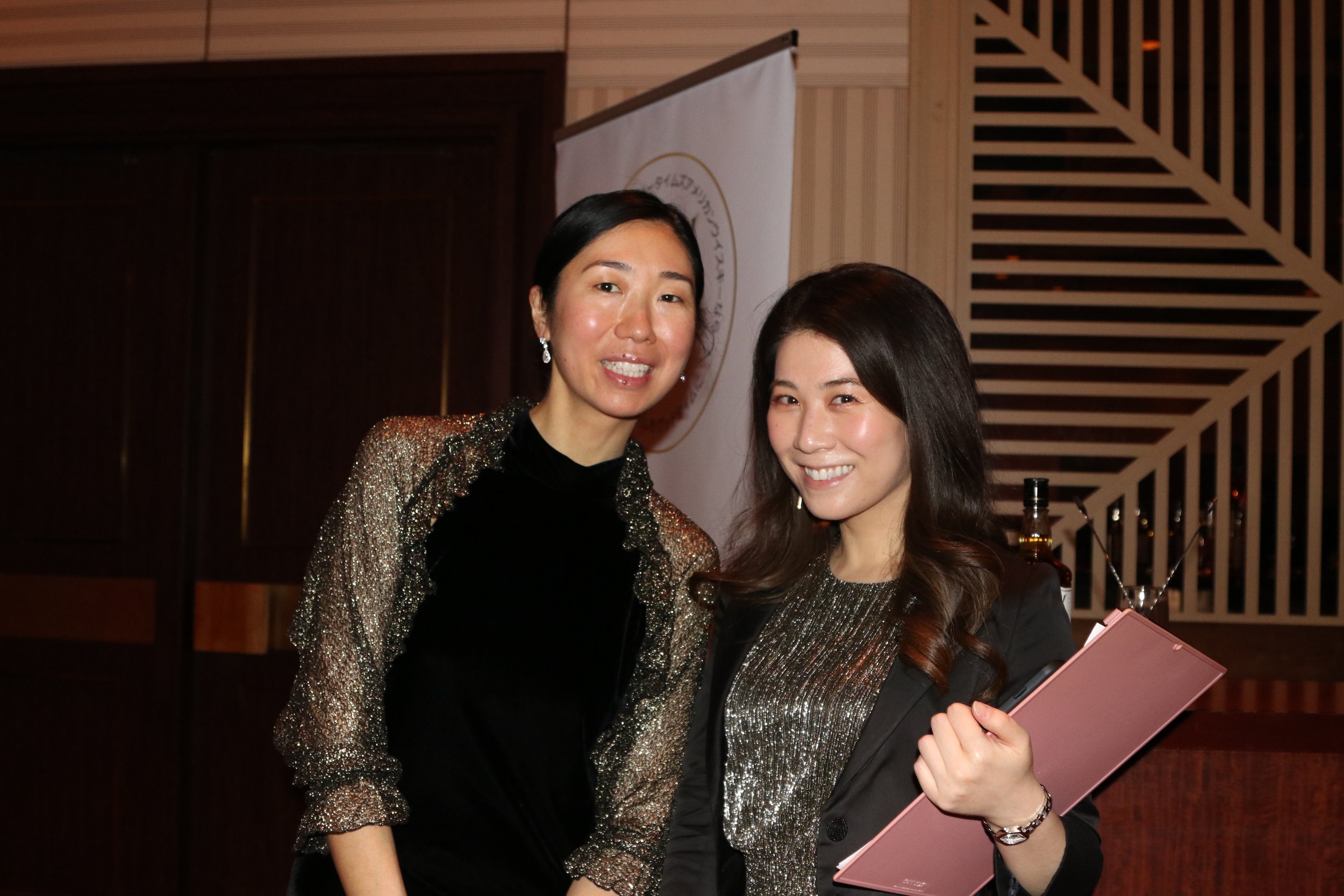


Photo of Ambassador Emanuel: US Embassy, Tokyo • All other photos: Media Sense K.K.
President’s Circle Sponsors
Platinum Sponsor
Thomson Reuters
Bronze Sponsors
AIG Companies in Japan
Coca-Cola (Japan) Co., Ltd.
Prudential Financial, Inc.
Gold Sponsor
Boeing Japan K.K.
Mercury Sponsors
Morgan, Lewis, & Bockius LLP
American Automobiles Space
NRK Sogo Kikaku Co. Ltd.
Prize Sponsors
Diamond
Air Canada
Aquasense Hotel & Resort
Delta Air Lines
Double Bounce Productions Inc.
Fufu Hakone
Herman Miller Japan, Ltd.
KOA Production Inc.
Marriott International, Inc.
MediaSense K.K.
MnK Niseko
United Airlines, Inc.
Vega Project K.K.
Ruby
Andaz Tokyo Toranomon Hills
Grand Hyatt Tokyo
Hakuba Hotel Group
Sapphire
Amway Japan G.K.
Dhillon Marty Inc.
ELC Japan K.K. (Estée Lauder)
Mondelēz Japan Ltd.
Park Hyatt Tokyo
Shop Japan
Sunrockers, Ltd.
Tokyo American Club
Emerald
All Nippon Airways Co., Ltd.
ANA InterContinental Tokyo
Antenna America
Asian Tigers Mobility
Big Picture International, K.K.
Bistro Vino Cellars
Conrad Tokyo
DevilCraft
Eastern Carpets
Elana Jade
Enplus Inc.
Food-e
Godiva Japan Inc.
Hafele Japan K.K.
HARIBO Japan
Hilton Tokyo
Hilton Tokyo BayHotel Indigo Inuyama Urakuen Garden
Hotel Indigo Karuizawa
Hyatt Regencv Kyoto
Jupiter International Corporation
M. ISHII & SONS
Northrop Grumman Japan
Palmer House
pearls.jp
Riedel Japan
Sazerac Japan
Simon Dalby Art
The Strings by InterContinental Tokyo
Temple University Japan Campus
Tsingtao Brewery
Yellow Toes Art Gallery
YouMeWe
Leading the Way
Each year, the American Chamber of Commerce in Japan (ACCJ) honors members who have shown extraordinary dedication. On December 20, recipients were recognized in person for the first time since 2019 at a special Leadership Forum networking event, chaired by ACCJ Governor John W. Carlson III, at The Tokyo Edition, Toranomon.
The ACCJ recognizes exceptional contributions for 2022 from across its three chapters
Each year, the American Chamber of Commerce in Japan (ACCJ) honors members who have shown extraordinary dedication. On December 20, recipients were recognized in person for the first time since 2019 at a special Leadership Forum networking event, chaired by ACCJ Governor John W. Carlson III, at The Tokyo Edition, Toranomon.
“ACCJ leaders set the bar high, but are incredibly generous about sharing their knowledge and experience, and I have benefited so much from being a part of this community,” Leader of the Year Anne Smith told The ACCJ Journal. “To be recognized and to have my name officially added to the history of the ACCJ in this way is a career highlight.”
Steven Brown, who created the Ten Points on Business Dinner Series, said being named Leader of the Year for Chubu was “a great honor and quite a surprise.” He added that the most challenging part of the year was overcoming the long hiatus from in-person events forced upon the chamber by Covid-19. “In truth, I was a bit nervous about whether the presentations would be a success, but the speakers have been excellent—both entertaining and informative.”
Kansai Volunteer of the Year Naomi Iwasaki said the award was “like receiving a Christmas present. But I know I am receiving this representing the D&I Committee. Without their love and support, I would not be here today.”
Taking on the emcee role at the D&I Summit and Leadership Series “was exciting and challenging,” she explained.
The ACCJ also honored Ritchell Madikaegbu with a Special Recognition Award for her work as liaison from the US Embassy, Tokyo. Her valuable updates on women’s empowerment and leadership development initiatives—along with spearheading opportunities to connect and share best practices with other organizations supporting the committee’s shared goals—made a big difference in 2022.
“I am truly happy about the honor, and it is a reminder of the importance of the US Embassy–ACCJ partnership,” she said. “I look forward to doing my part to advance US Embassy and ACCJ priorities in Japan in 2023.”
Anne Smith
Dual roles led to Leader of the Year honors for Anne Smith, whose tireless work as vice-chair of both the Government Relations and Healthcare Committees has elevated the ACCJ’s relationships with US and Japanese government partners. She is the face of the Government Relations Committee, setting meeting agendas and running committee-hosted events, and she spearheaded several defining events of the year, including the welcome luncheon with US Ambassador to Japan Rahm Emanuel, attended by more than 160 members and guests. And her work with the Healthcare Committee resulted in meetings with top-level government and industry leaders. Smith’s passionate dedication serves as an inspiration to others and the ACCJ is grateful for her impactful contributions to the chamber’s position as the voice for global business in Japan.
Akimasa Kataoka (Kansai)
Recognized for his superb leadership as co-chair of the Kansai Membership Relations Committee (MRC), Akimasa Kataoka revitalized the MRC and was a driving force behind the committee’s first in-person event in more than two years. Thanks to his efforts, the committee now has a growing membership base and many new events underway, including a young professionals mentorship program. Kataoka’s energy and commitment have created new opportunities for members to participate and get involved in the Kansai Chapter.
Steve Brown (Chubu)
As a founding member of the Chubu Independent Business Committee (IBC), Steve Brown served as the committee’s first chair. He returned to IBC leadership this year, determined to reinvigorate the Chubu Chapter, and provided exceptional leadership as co-chair. He conceived of the Ten Points on Business Dinner Series, in which experienced business leaders shared key insights that led them to success and mistakes that have proved educational. Brown’s enthusiasm and tireless efforts made these monthly events a tremendous success, reengaging members and reestablishing the solid foundation of the Chubu community, and he continues to inspire leaders in the Chubu Chapter and throughout the chamber.
Takako Onoki
Contributing endless energy and expertise to the Competition Policy Committee, Takako Onoki has made invaluable contributions, proactively organizing new speaker events and coordinating advocacy initiatives. She swiftly marshals the committee’s views on public comment opportunities to ensure that the ACCJ has a strong voice on key industry issues. As the committee’s most active member for several years, Onoki is an integral part of the committee’s leadership. The chamber is grateful for her passion and continued dedication.
Naomi Iwasaki (Kansai)
It is for her proactive and enthusiastic support of the Kansai Diversity and Inclusion Committee that Naomi Iwasaki was named Volunteer of the Year. She was critical to the success of the D&I Summit Series, where she managed the Day 2 networking session and served as emcee on Day 3. She also collaborated directly with committee leaders and the speaker for one of the popular Leadership Series speaker sessions. Iwasaki provides an important perspective during committee meetings and is an indispensable asset to leaders and members alike. Her inclusive workstyle encourages others to further participate in realizing the committee’s goals and inspires inclusive business practices.
Rafael Dantas (Chubu)
The ACCJ expresses its deepest appreciation to Rafael Dantas for his outstanding efforts in support of the Chubu Aerospace and Manufacturing Committee (AMC). He organized the Chubu Chapter’s first in-person networking event since before the pandemic, secured a venue where adequate social distancing was possible, and planned activities to facilitate networking among the participants. Due to his ingenuity and initiative, this and a follow-up event were resounding successes, resulting in three new members joining the ACCJ Chubu Chapter. Dantas’s positive energy, superb ability to organize, and strong networking skills are an asset to the entire chamber.
Healthy Ideas
The 2022 HxD event was modeled on the concept of ideathons, or workshop-like gatherings of groups tasked with challenges for which they are to propose solutions. Through this model, a total of 86 ideators, facilitators, and mentors worked together through a cyclic ideation process to identify root causes and develop the next big project in healthcare.
Innovators empower elderly patients at ACCJ Healthcare x Digital Ideathon
Started in 2020, the Healthcare x Digital (HxD) initiative of the American Chamber of Commerce in Japan (ACCJ) has grown to become a key platform for collaboration among innovators, startups, entrepreneurs, and top pharma executives.
After hosting pitch events for the first two years, the first ever HxD Ideathon took place late last fall with a hybrid in-person and online kickoff at the Hilton Osaka on October 29. This was followed by two virtual sessions on November 5 and 12, then finalized by the hybrid pitch event on November 19 at the Hilton Osaka. The four-day event was inspired by the tagline “empowering elderly patients through digital health.”
Participants included university students from the United States and Japan as well as healthcare professionals and a panel of judges from healthcare fields. Their aim? To forge new partnerships and create solutions for some of Japan’s most critical challenges in community healthcare and individual patient care.
Ideathon
The 2022 HxD event was modeled on the concept of ideathons, or workshop-like gatherings of groups tasked with challenges for which they are to propose solutions. Through this model, a total of 86 ideators, facilitators, and mentors worked together through a cyclic ideation process to identify root causes and develop the next big project in healthcare.
Day one began with opening remarks by Simone Thomsen, president and representative director of Eli Lilly Japan K.K. as well as ACCJ governor-Kansai, and continued with a panel discussion and ideation in groups to define problem statements and the healthcare challenges to be tackled. Ideation continued on days two and three, when teams focused on initial designs and worked to find agreement on a solution—one per group—that was to be presented on pitch day.
The event culminated on November 19 with a pitch contest in which nine teams presented their concepts, and engaged in question and answers sessions with judges, who then selected the best ideas. The winning teams will move forward to the next phase of the competition—a hackathon—to be held in 2023.
Pitch Day
The final day was divided into two rounds during which each group had five minutes to pitch their solution to a panel of judges.
Perhaps the biggest draw of HxD is the opportunity to present ideas directly to—and receive invaluable feedback from—industry leaders. There’s also the possibility of entering into a joint venture with, or receiving investment from, an industry player.
Winners also receive cash prizes and, this time, will have the chance to present their ideas at the 2025 Osaka Kansai Expo and as part of the Japanese government’s Super City Initiative.
Let’s take a look at this year’s pitches.
Kyocare
Presented by Hiba Abulgasim, Kyocare is a digital customer-to-customer and business-to-business platform that provides flexible, personalized, quality care.
In the pitch, Abulgasim noted that 28.9 percent of Japan’s population is over the age of 65 —a record number that is growing. But the workforce tasked with caring for them is understaffed and overworked, and about 70 percent want to leave the profession.
This means care services are poorly coordinated. Many elderly people feel lonely and disconnected as a result, and family members tasked with their care feel stressed out.
The solution? Kyocare provides on-demand caregiving services for the elderly through an app that matches those who need long-term home care with nearby care workers.
Hi-Real System
A digital ecosystem pitched by Masato Suzuki and Sachiko Nakatsuka, Hi-Real System allows emergency-patient health records to be accessed by healthcare professionals even before emergency care is provided.
In their problem statement, Suzuki and Nakatsuka asked, “How do we support emergency triage when medical resources, such as medical staff, are limited?” Their solution involves a blockchain emergency information transmission service that instantly shares patient information to the hospital before patient arrival, which can then be used for smoother emergency treatment diagnosis.
Maya Mind
Osaka University Assistant Professor Gajanan Revankar presented Maya Mind, a web platform accessible via smartphones, tablets, or personal computers that targets patients who suffer from dementia. Revankar noted that, during early onset of dementia, diagnosis is time consuming and costly, while accuracy is low. Maya Mind seeks to tackle all these challenges.
The app uses eye tracking, speech processing, artificial intelligence (AI)-based analytics, and machine learning algorithms to create an index score for classifying different kinds of dementia, among other provisions.
AI Assistant
Ajinkya Takawale and Tomoko Mitsuoka pitched a voice-controlled AI assistant with a focus on early diagnosis of chronic kidney disease (CKD) and diabetes. The challenge before Takawale and Mitsuoko included how to leverage digital technologies to make the elderly more aware of their health risks through early diagnosis. Their voice-controlled robot uses non-invasive methods such as retinal imaging to track, record, and analyze an elderly person’s healthcare data. Using the results, they provide a diagnosis and help the person plan their lifestyle based on the insights.
Toilet Light Sensor for CKD
Chisato Banno and Reiko Tsubaki, both third-year students at Tokyo Medical and Dental University, also pitched a digital solution for patients at risk of CKD. Their solution offers a low-cost yet accurate Internet of Things device that samples, analyzes, and visualizes a person’s real-time health data, helping them to diagnose the onset of CKD early.
Their first prototype will use toilet-based light sensors that can analyze urine. The data gathered can be visualized via a smartphone app, which also can share data with a relevant healthcare provider, such as a hospital.
Helper-san
An avatar bot that identifies and neutralizes triggers that cause aggression in dementia patients, Helper-san is a digital platform that was presented by students and researchers Shobha Dasari, Allison Jia, Kanon Mori, Aarushi Patil, and Tsubasa Tanabe.
The students and researchers are part of a collaboration involving universities in Japan and the United States brought about by the Japan-American Innovators of Medicine, a four-month program in which medical innovators from both countries join to tackle a global healthcare issue related to dementia, such as aggression.
Their bot, which is embedded in a small, television-like device, can track a patient’s behavior, identify aggression triggers, and defuse them. An example would be dimming or turning off a light source that has been identified as the trigger.
Parapul
A web app presented by Kasper Watanabe, Parapul helps caregivers obtain the information they need, build relationships with like-minded people, and support their caregiving lives.
As the portion of society classified as elderly increases, Watanabe noted, the physical, mental, and financial burden on family members will grow, and yet such caregivers often lack the information necessary to provide care.
The Parapul platform is based on three pillars:
- Providing customized information, such as nursing care, educational materials, or local service listings to family members who are caregivers
- Connecting caregivers so they can share their challenges on bulletin boards, question-and-answer boards, or via direct messaging
- Offering a caregiving management system that, for instance, allows users to schedule nursing care support
Mobile Health
Pitched by Jingwen Zhang and Nondo Jacob Sikazwe, Mobile Health (mHealth) is a community platform that allows those at risk of CKD to be inspired to connect and receive information that can help them manage the condition.
During their presentation, the ideators noted that there are few digital tools on the market to help patients prevent or manage CKD. Why is this? First, individuals at risk, or who have early onset, of CKD have no or only slight symptoms that cause them inconvenience in daily life.
What’s more, those with middle-to-low incomes often struggle with daily living, which leaves little time and few resources to access primary healthcare.
Lastly, current biomarkers used to screen for CKD are affected by many factors, so there is a need for regular checkups.
Their community platform solves these challenges by incentivizing elderly people and their caregivers in three key areas:
- Motivation: where you can collaborate with the local community and receive community rewards for positive lifestyle changes
- Connection: where you can communicate directly with a healthcare provider
- Education: participate in customized, immersive games, quizzes, audio guides, and more that shed light on the issues of CKD
Coupon Kun
The final pitch, by Zechen Zeng and Keita Tsuyuguchi, addressed loneliness among elderly, which has reached epidemic levels. Zechen and Tsuyuguchi’s solution is a social network being developed in four phases. Phase one is to create a “Groupon experience,” through coupons for groups, that incentivizes elderly individuals to experience new things—such as hobbies, lessons, or traveling—with new social connections.
In phase two, the platform aims to introduce digital literacy to the elderly, including adoption of smart devices, while they undertake the group experiences.
In phase three, apps are used to monitor, collect, and share the health data of users with healthcare professionals following strict data privacy and security protocols.
And in phase four, insights gleaned from healthcare data are used to help users follow a healthy lifestyle.
Winners
With so many innovative ideas to consider, selecting the winners was not easy for the panel of industry professionals tasked with judging the 2022 HxD Ideathon.
Pitches were scored based on scientific innovation, relevance and timeliness, business feasibility, and how well they addressed the core issue.
Three ideas were selected to advance to the HxD hackathon in 2023:
- Maya Mind
- Hi-Real System
- Toilet Light Sensor for CKD
One other, Kyocare, was given special recognition and will also be part of the hackathon.
Overall, 119 ideators, facilitators, and students participated in at least one day of the ideathon, and connections were made with more than 22 universities for future events.
Judges
Kozo Mori
Director, Medical Industry City, Medical and New Industry Division, Planning and Coordination Bureau, Kobe City Hall
Masayoshi Yamada
Deputy director, Department of Smart City Strategy, Strategy Promotion Office, Regional Strategy Promotion Division, Osaka Prefecture
Torsten Kanisch
Executive officer and vice president, commercial excellence, AstraZeneca K.K.
Christian Boettcher
Consulting partner, health sciences and wellness, EY Strategy & Consulting
Francisco Proano
Head of strategy and digital transformation, Bayer Yakuin
Yasuhiko Iida
Senior director, Consumer Experience Team and Next Generation Customer Engagement Strategy, Eli Lilly Japan
Hiroki Kayama
Strategic partnership development manager, AI for Japan, Google G.K.
Changed Reality
When Rahm Emanuel arrived in January as the 31st US ambassador to Japan, he wasted no time in building new connections and strengthening existing ties between the two countries. His experiences as mayor of Chicago, President Barack Obama’s chief of staff, a member of the US House of Representatives, and senior advisor to President Bill Clinton coalesce into a whirlwind of diplomatic energy. On May 16, Emanuel took time out from this fast-paced schedule to speak to members and guests of the American Chamber of Commerce in Japan (ACCJ).
US Ambassador to Japan Rahm Emanuel shares his views on the state of the bilateral relationship
Photos by Miki Kawaguchi/LIFE.14
Listen to this story:
When Rahm Emanuel arrived in January as the 31st US ambassador to Japan, he wasted no time in building new connections and strengthening existing ties between the two countries. His experiences as mayor of Chicago, President Barack Obama’s chief of staff, a member of the US House of Representatives, and senior advisor to President Bill Clinton coalesce into a whirlwind of diplomatic energy. He has already visited 10 of Japan’s 47 prefectures and attended events stretching from Hiroshima to Otsuchi, in Iwate. And his love of trains and use of the country’s mass transit has captured the hearts of Japanese media.
On May 16, Emanuel took time out from this fast-paced schedule to speak to members and guests of the American Chamber of Commerce in Japan (ACCJ). Organized by the ACCJ Government Relations Committee, the luncheon at Tokyo American Club saw more than 200 in-person and remote attendees listen as the ambassador shared his thoughts on Japan and the great potential for the bilateral relationship. Emanuel also graciously responded to a range of questions during a lengthy Q&A session.
Following a welcome from committee Vice-Chair Anne Smith, ACCJ President Om Prakash delivered opening remarks. Noting that the ACCJ, as the voice of the US business community, has enjoyed a close and valuable relationship with the US Embassy, Tokyo, over the course of the chamber’s nearly 75-year history, he said, “I can’t think of a better person at the right time in the right place than this man.” In response, the ambassador quipped, “Intros like that make you wish your parents were here, because you know your mother would be proud and your father would be amazed.”
Impact on Investment
Emanuel began by noting that, after two years without an ambassador to its most important ally in the most important region, the White House and President Joe Biden are placing great value on Japan. The bilateral relationship, Emanuel believes, is at an inflection point. “We are no longer discussing, as we have for the past 40 years, alliance protection. I think the US–Japan relationship has matured into alliance projection,” he explained. “Yes, it’s about the two countries, but it is about the two countries projecting forward into the region in a shared way.”
As he said this, the embassy was preparing for Biden’s May 22–24 visit. That the trip took place so soon after the ambassador’s arrival highlights how their long working relationship energizes efforts to build cooperation with the administration of Japanese Prime Minister Fumio Kishida.
Stable, Sustainable Business
The challenges facing the world are many, and some are shaking the foundations of long-held approaches to business operations.
Emanuel said he feels we are transitioning from neoliberalism to a world in which consideration of potential conflict and political turmoil must play a key role in corporate decisions.
“There have been three major events that have shaken people and their calculations of what is going to be the road going forward,” he said. “And it’s a level of uncertainty, and an intensity of uncertainty, that really hasn’t been experienced in a long time when it comes to international affairs and international economics.
“My own view is that low cost and efficiency, which have been the guiding North Star for your individual companies for how you make investments, where you make investments, etc., those North Stars are slowly but surely … being replaced by stability and sustainability. No company today making a major decision economically, internationally, is going to be stuck with a major investment in an insecure, unstable political environment, a country that can one day have major sanctions [placed] on it,” he continued, alluding to the fallout from Russia’s invasion of Ukraine and the potential for future conflicts.
New Calculus
The coronavirus pandemic, he noted, has already exposed the fragility of supply chains, and the war in Ukraine is having a similar impact in how it raises concerns over uncertainty in and around political systems, even in democratic countries. “You’re going to start to change the calculus of how you make investments, based on whether a country is politically stable and if it lives by the rule of law. Does it have the resilience and sustainability that you need as a company?”
Speaking of uncertainty as it pertains to international trade, Emanuel said that we are witnessing the emergence of a new political and economic equation, one that will become clearer over the next five years. To stability and sustainability he added resilience. “Each of those, in some way, becomes more dominant in how we think about political decisions, commercial decisions, and economic decisions.”
He closed by saying that he feels we have a unique opportunity to advance US–Japan relations.
“I said when I was confirmed, I think that what we do in the next three years, as the US and Japan, will determine our relationship for the next 30.”
The ambassador believes that, if Kishida emerges victorious in the July elections, Biden has a chance to build a solid foundation with the Japanese prime minister, with whom he came to be on a first-name basis after they had spent just one day together in May.
Emanuel knows what can happen when there is instability at the top, and how that can impact the bilateral relationship. As Clinton’s senior advisor, he saw six Japanese prime ministers come and go in eight years. “As soon as you started to get to know somebody, they were gone,” he said. “There’s a chance President Biden will have one prime minister for his tenure,” he continued. “That’s a unique opportunity not only to develop a relationship but [to work with] a person who, without an election overshadowing decisions, has the ability to make some real decisions for the future of the US–Japan relationship, including as it relates to the Indo–Pacific.”
To that end, Emanuel applauded Kishida for his leadership in the face of recent global uncertainty.
“One of the things I think Prime Minister Kishida has done very successfully is he has taken the Indo–Pacific and the Transatlantic and collapsed them into a single strategic sphere,” he said. “Just in the past 10 days, he’s hosted the European Union president, the Finnish prime minister, the chancellor of Germany and, two days prior to that, on his visit to Europe, he was with the British prime minister, the Italian prime minister, and the Pope. That should be seen as a way in which Europe now has a vested interest in a free and open Indo–Pacific. That is a major change of where we are politically and a major change of where we are economically.”
Concluding his speech, Emanuel told the crowd: “I look forward to the next three years working with each of your companies and promoting not only your commercial interests but, more importantly, our shared interests.”



